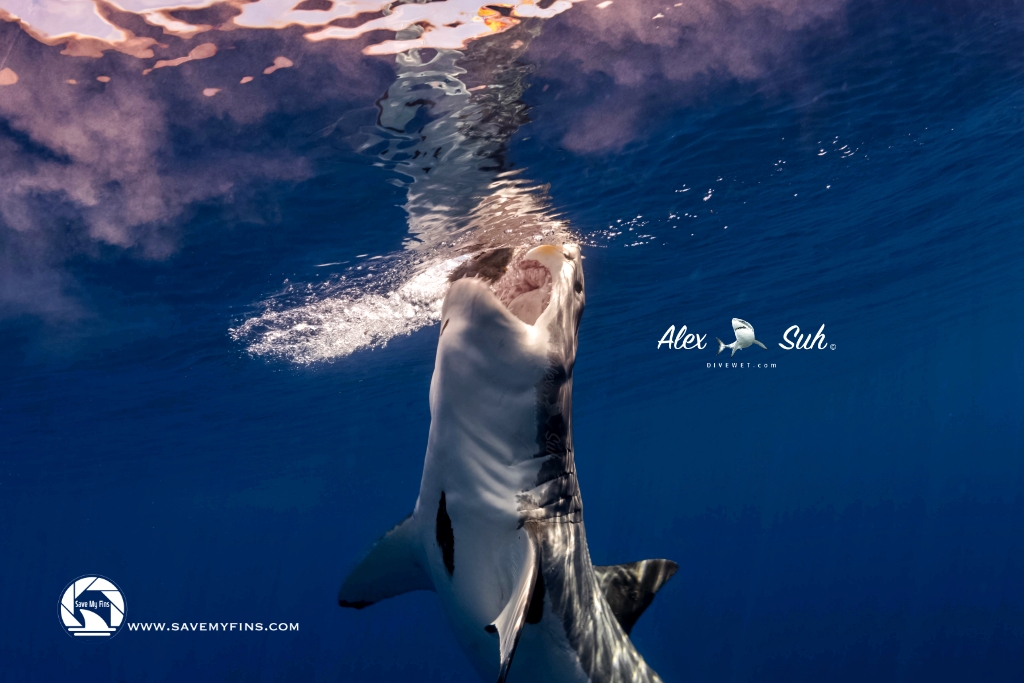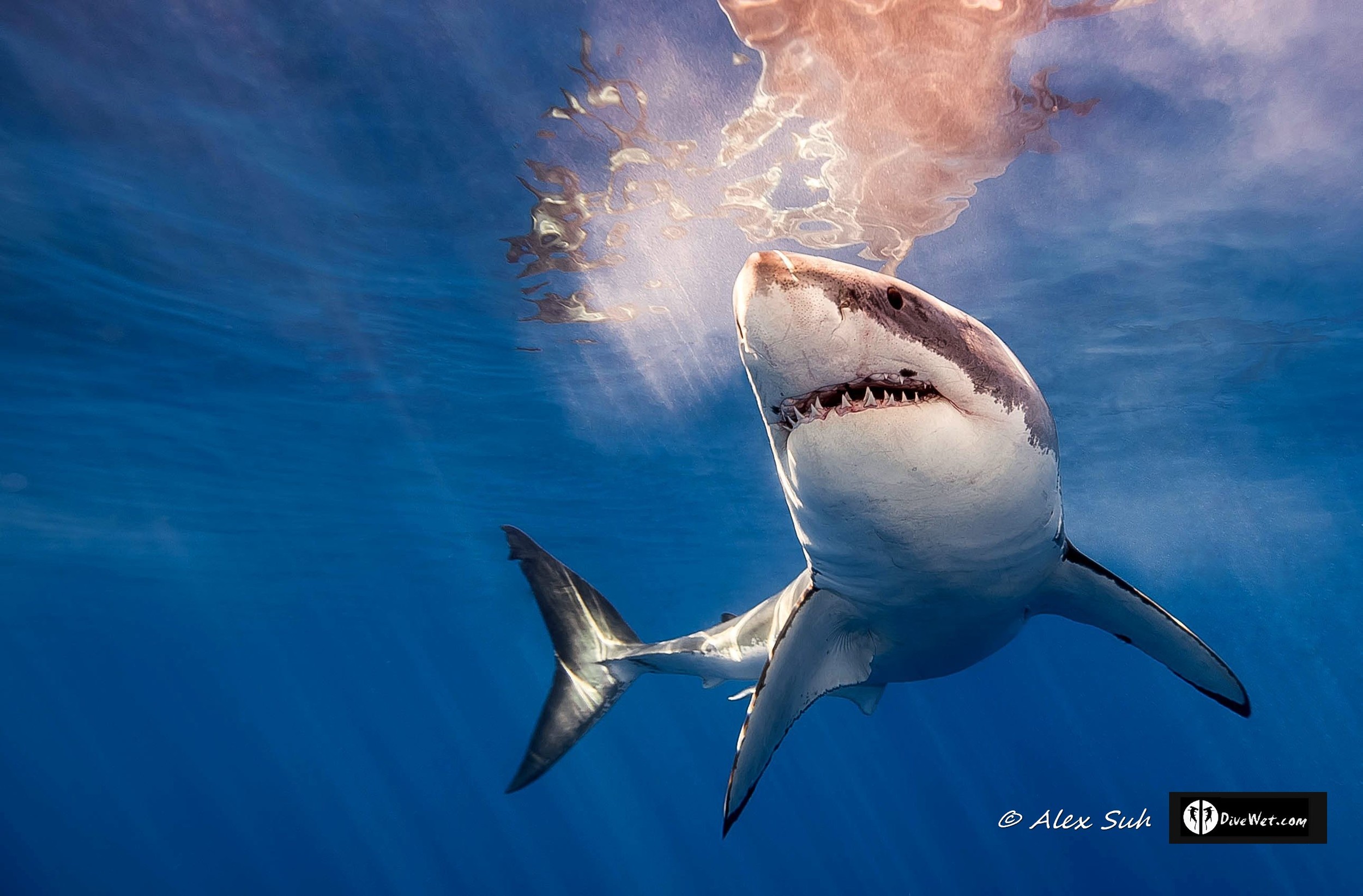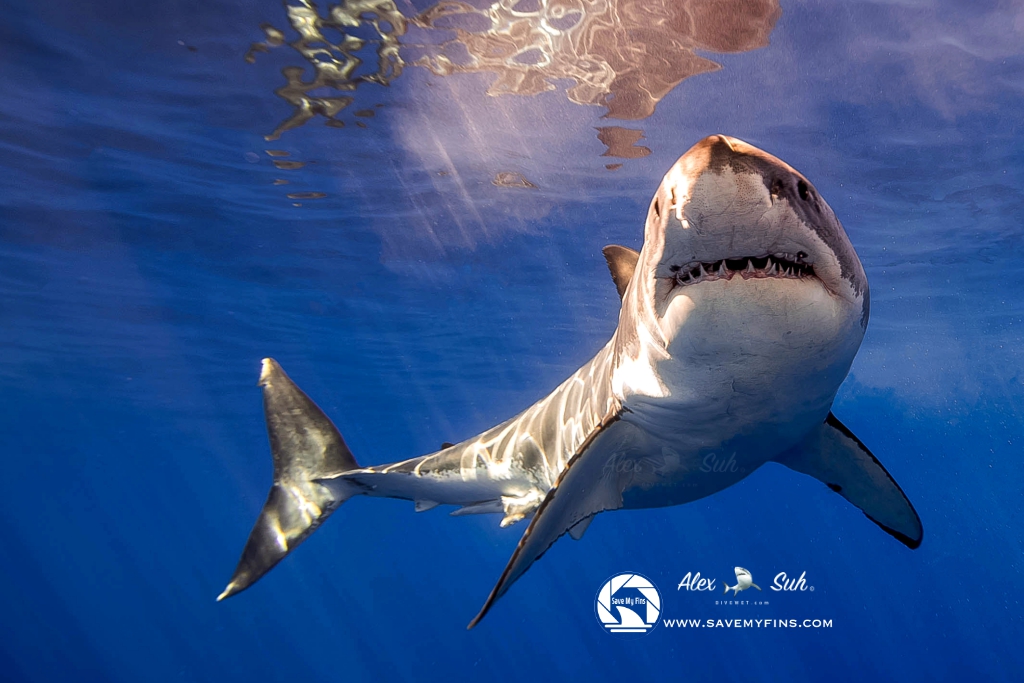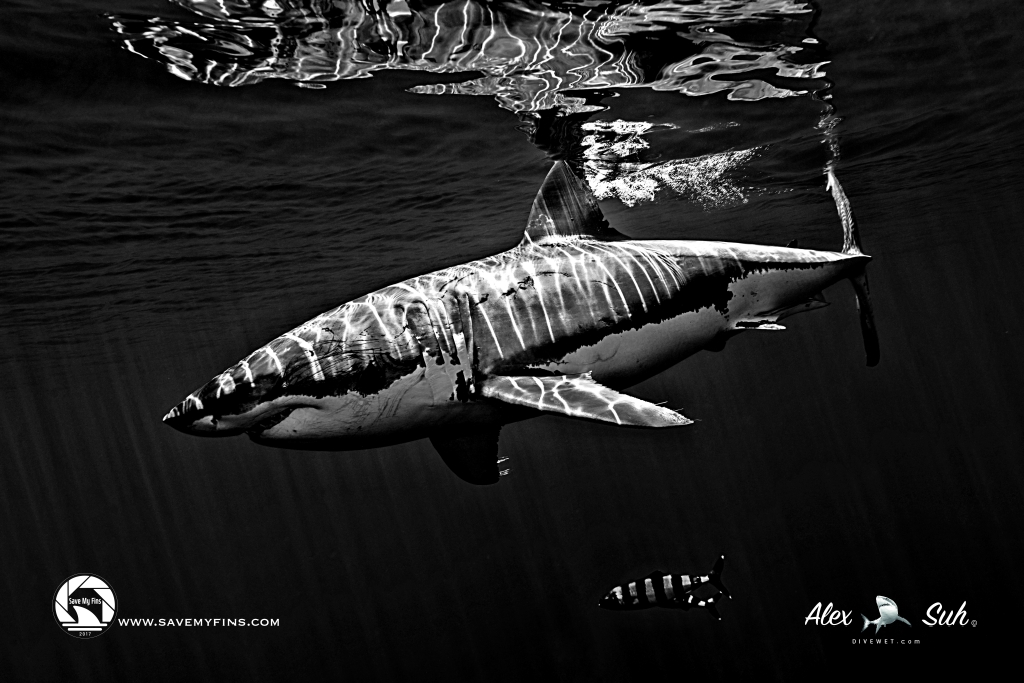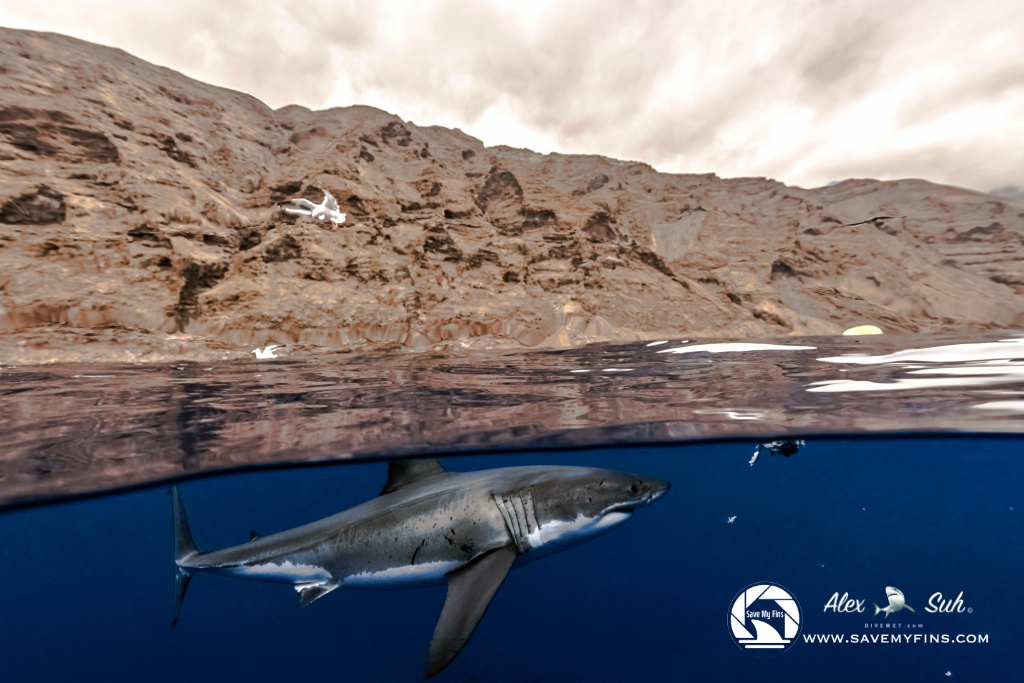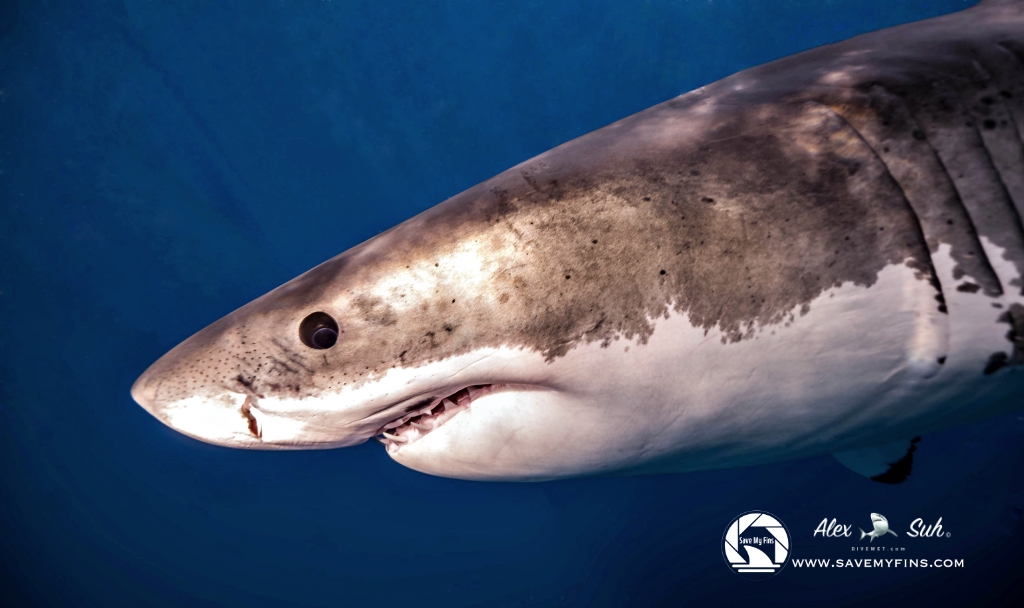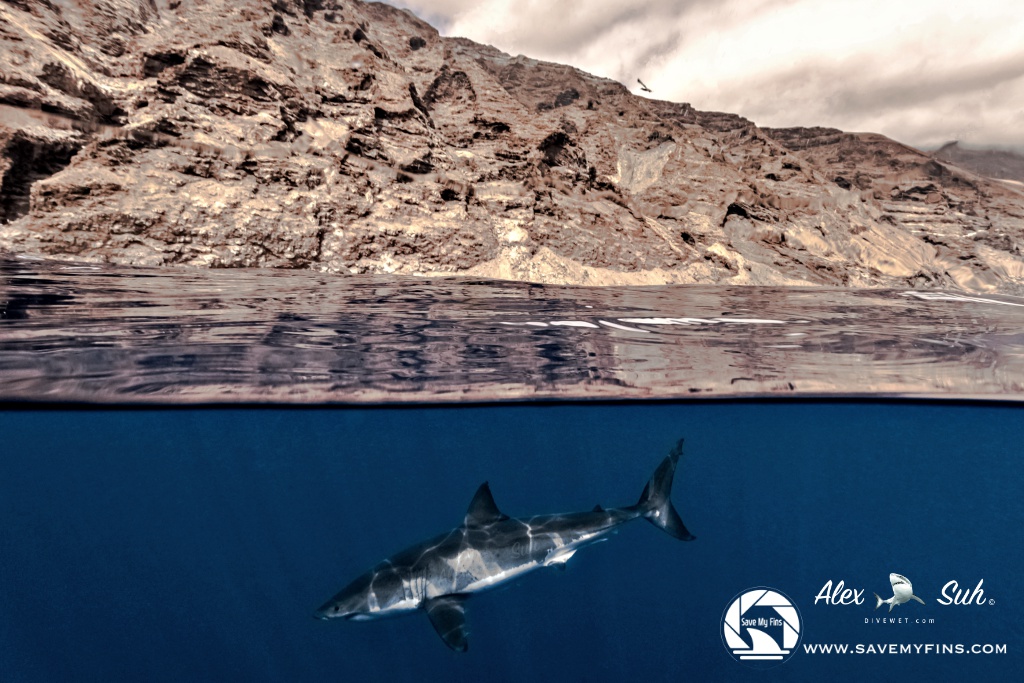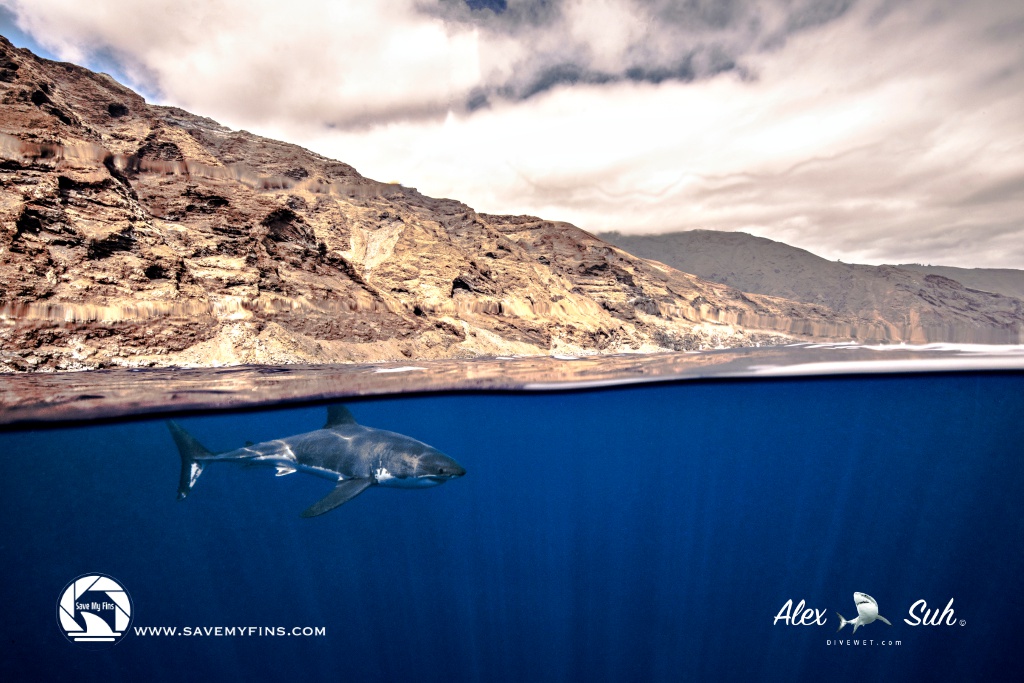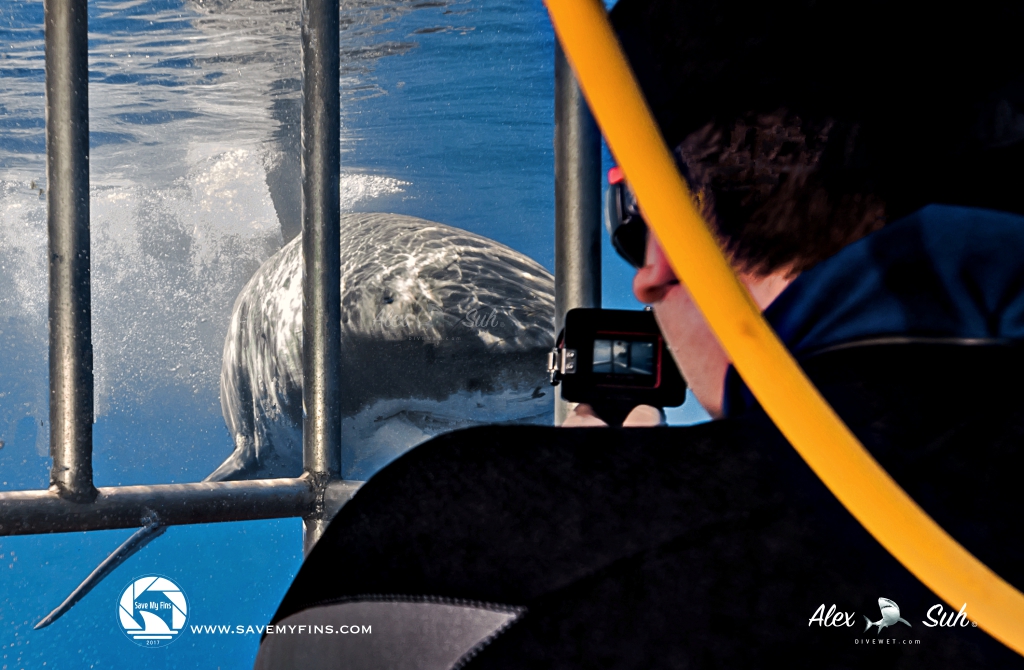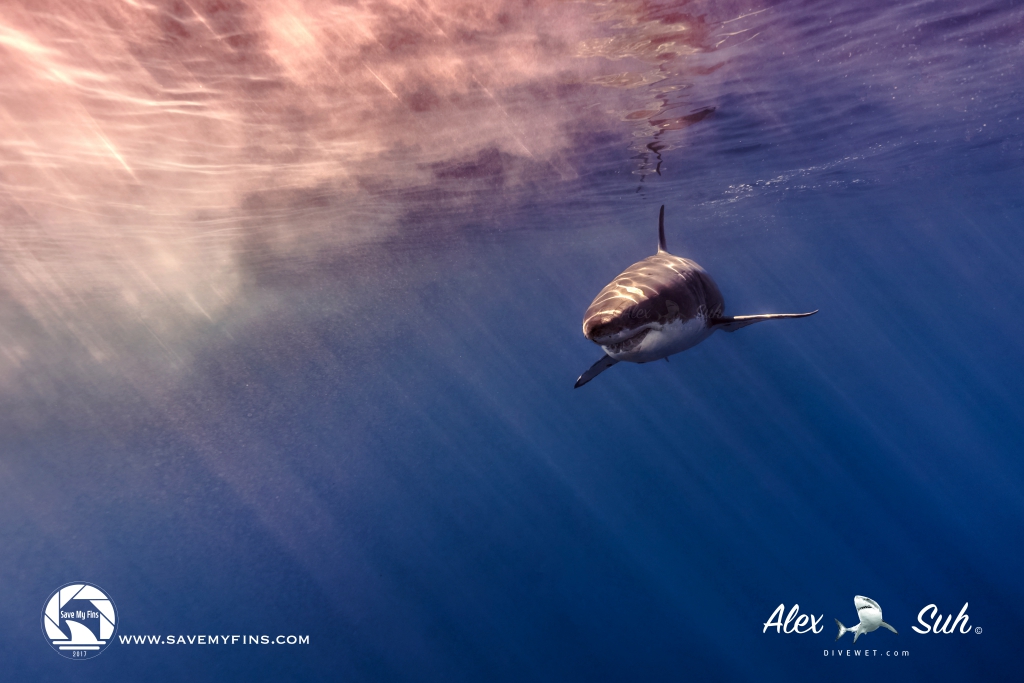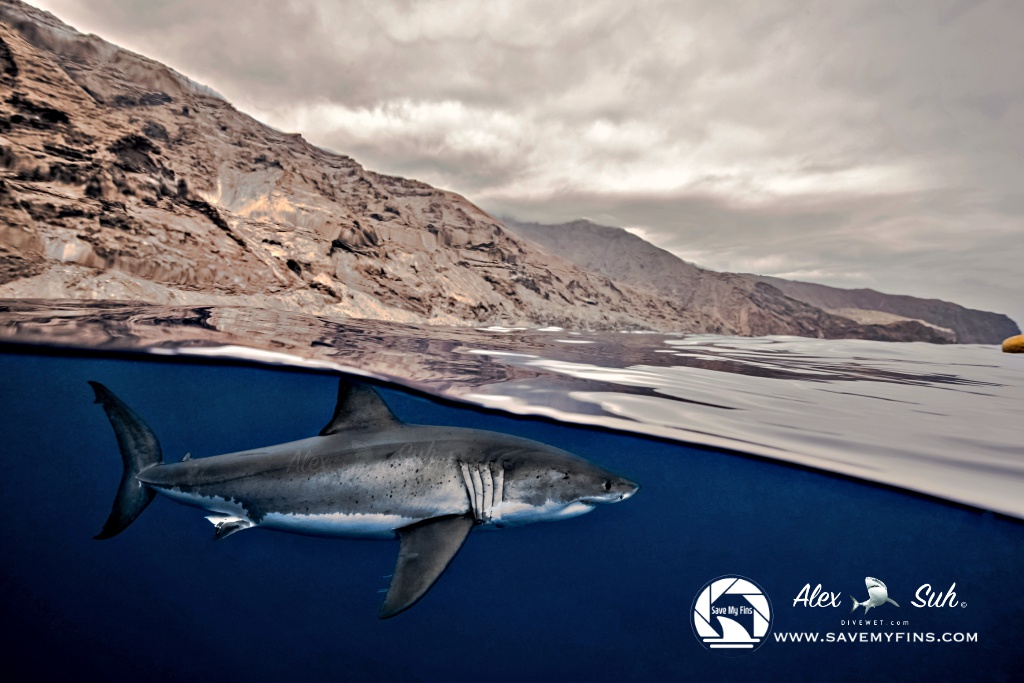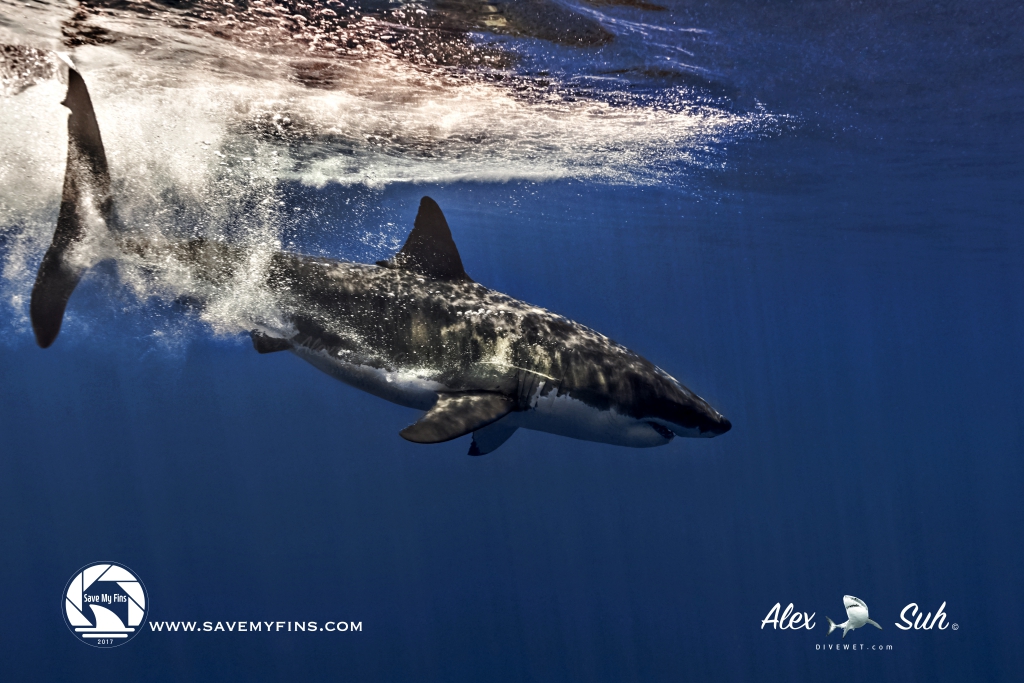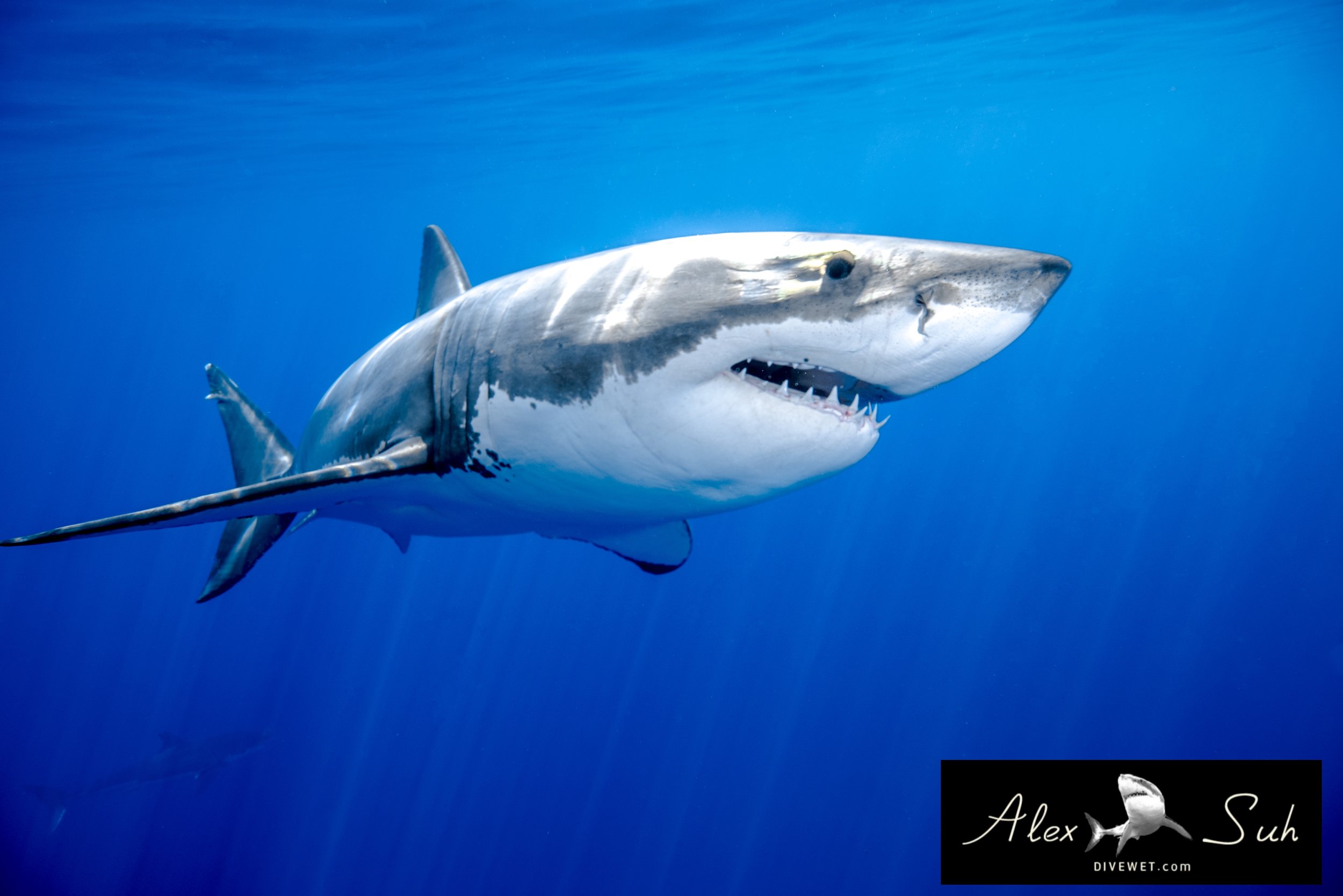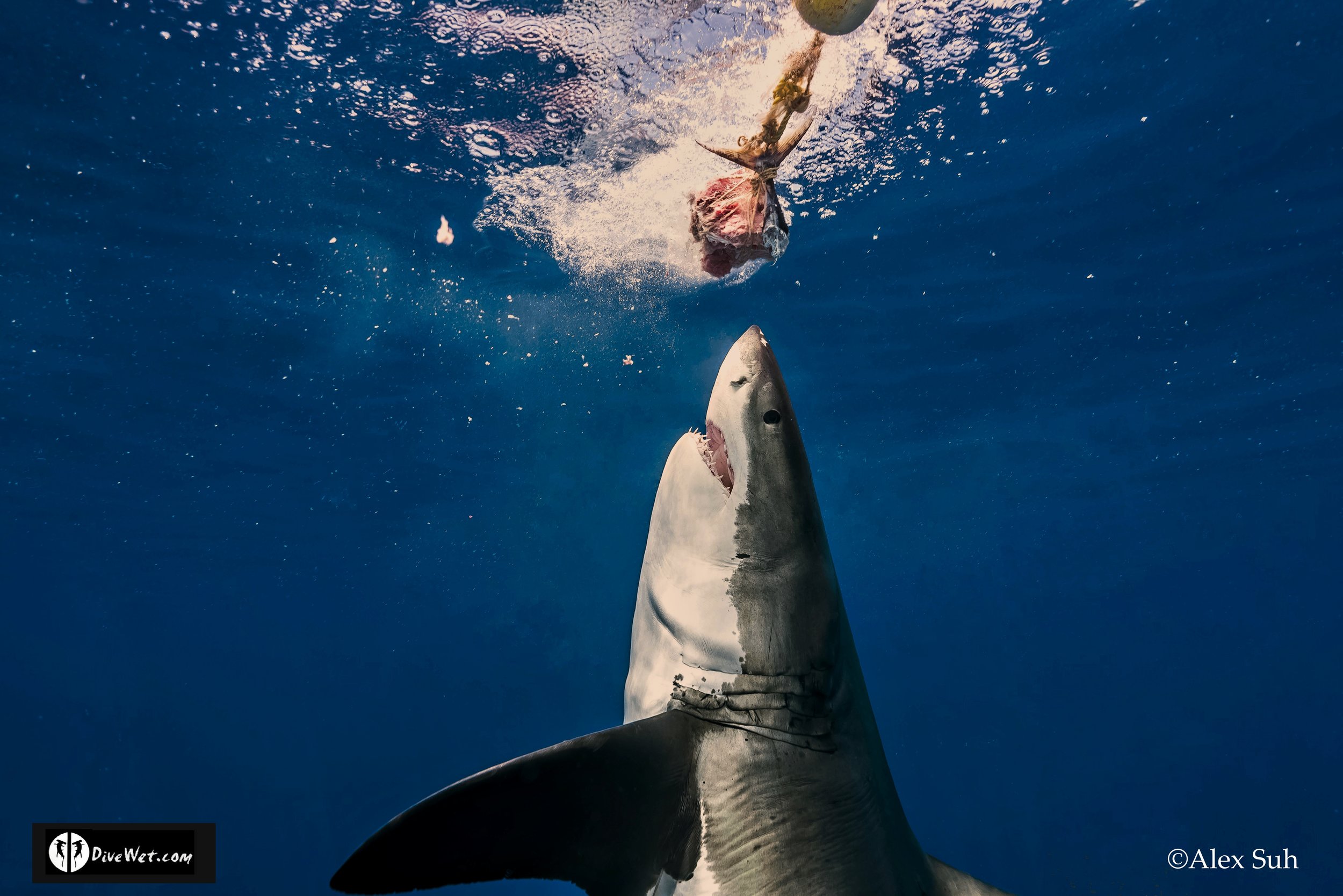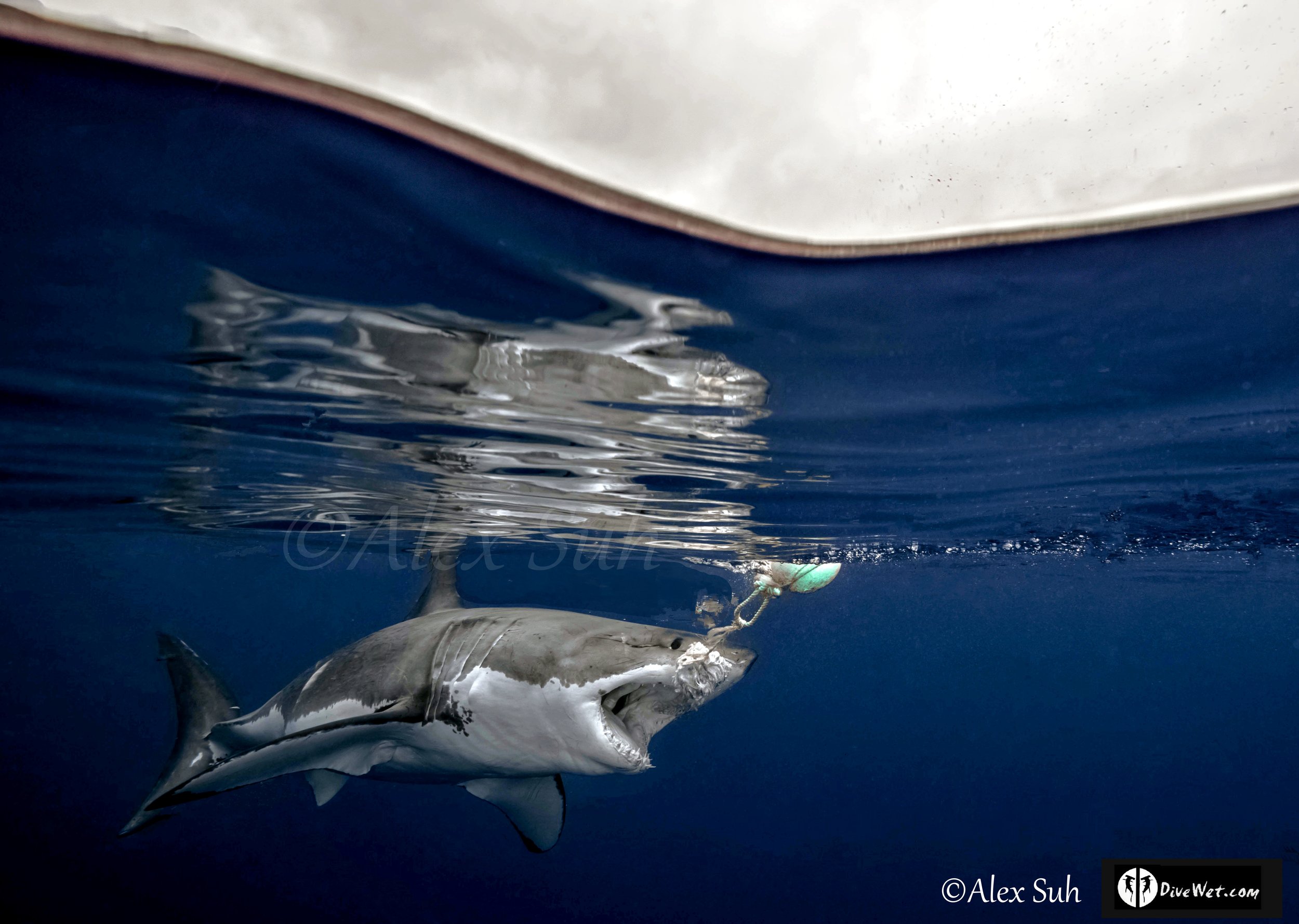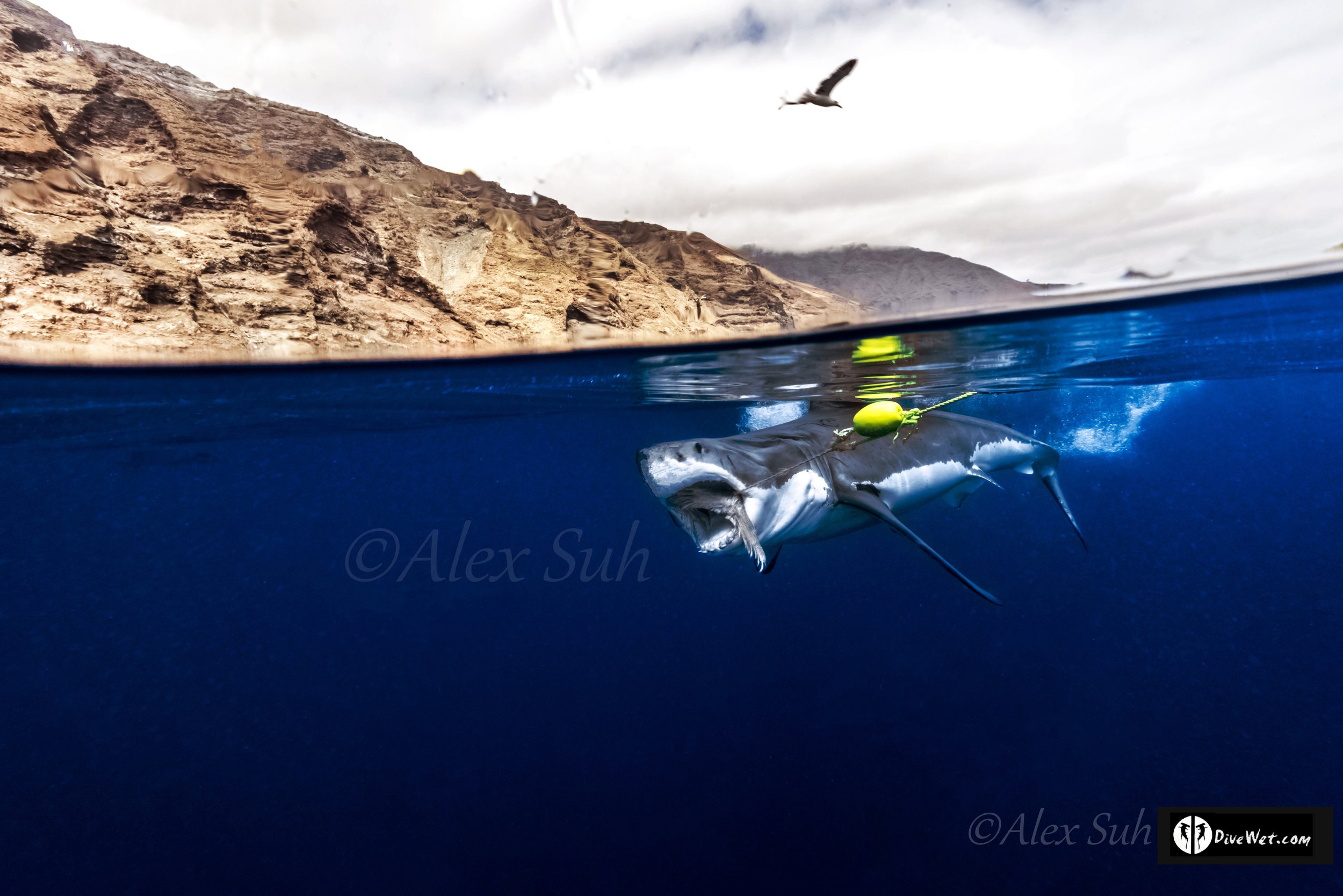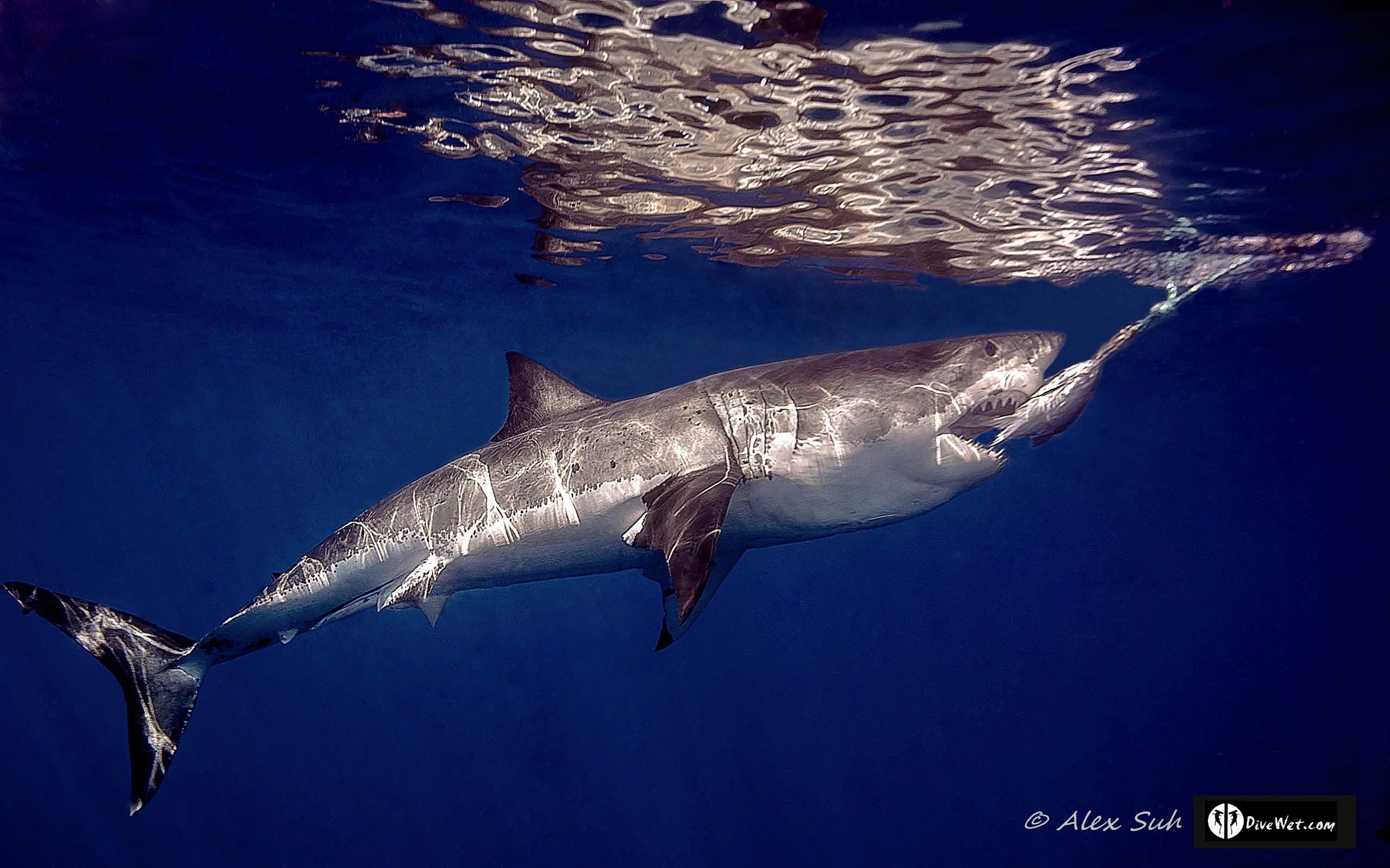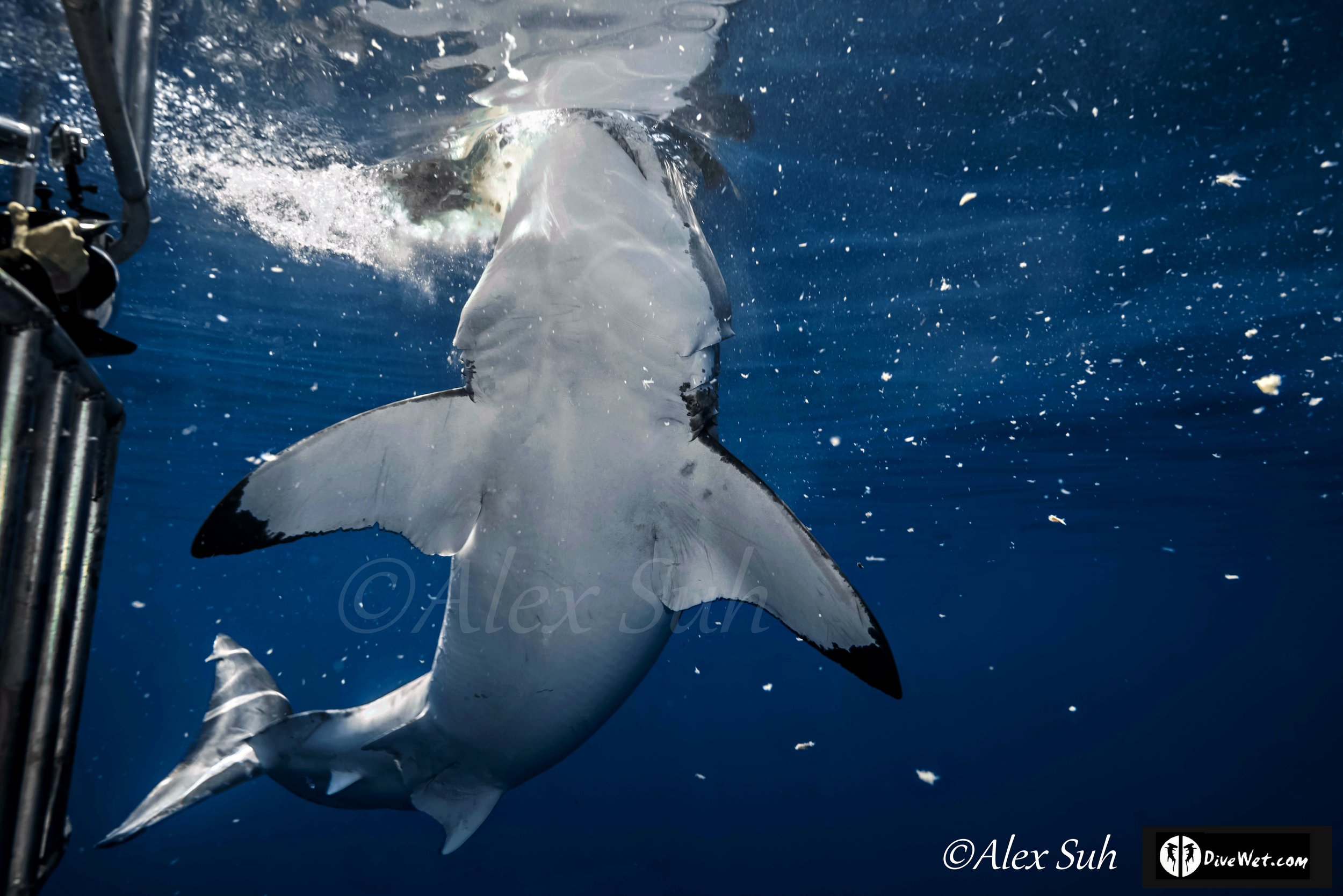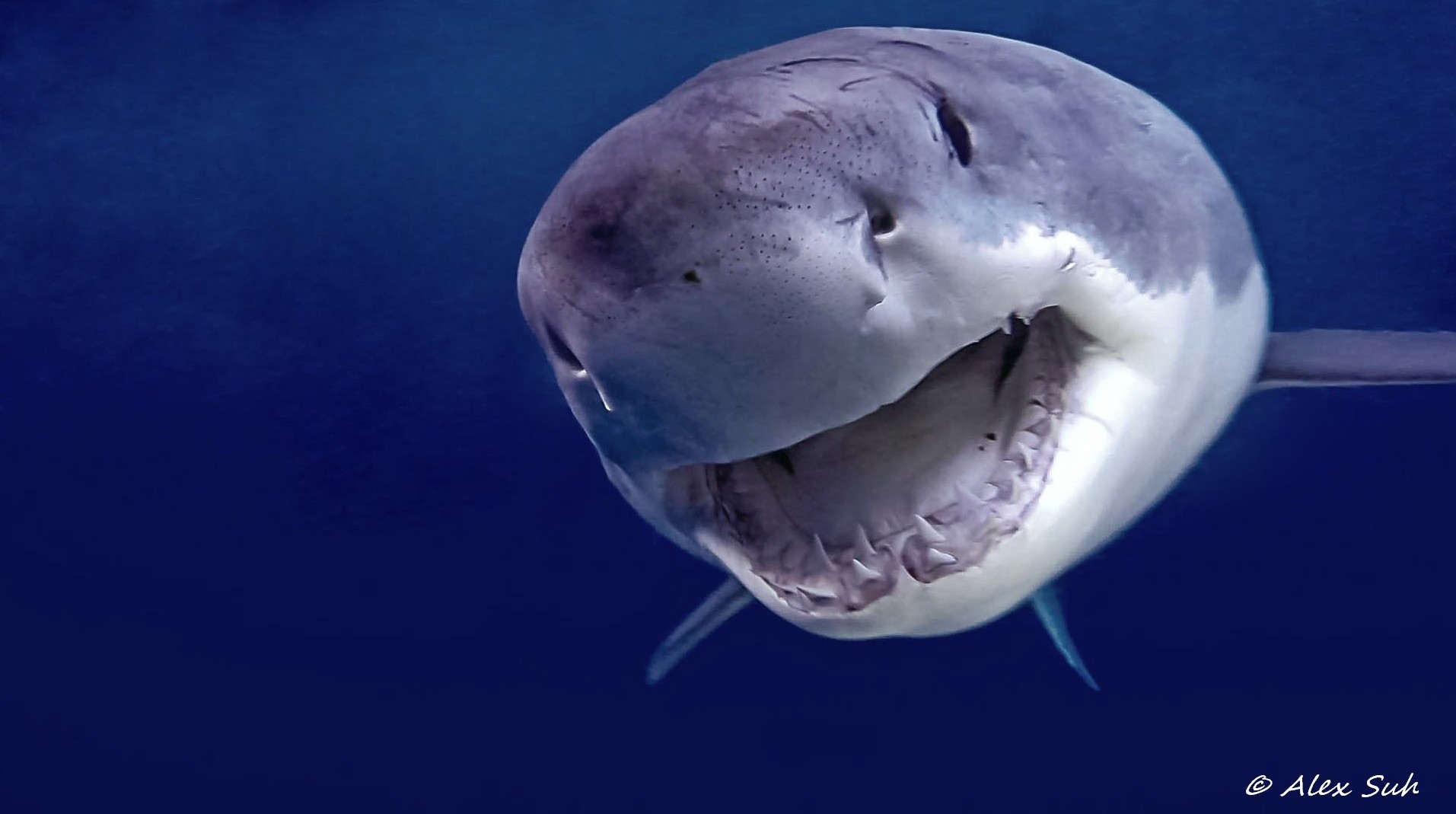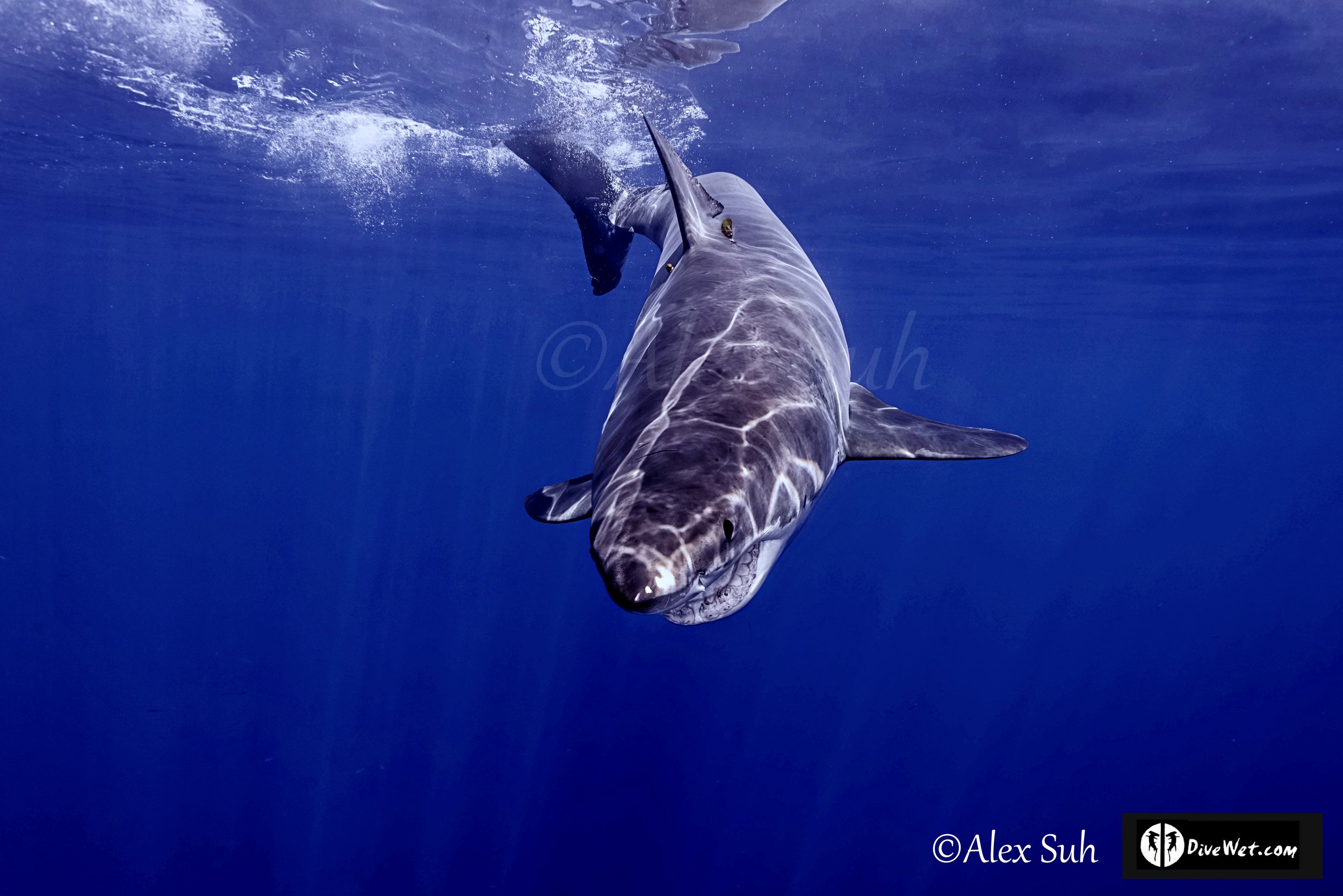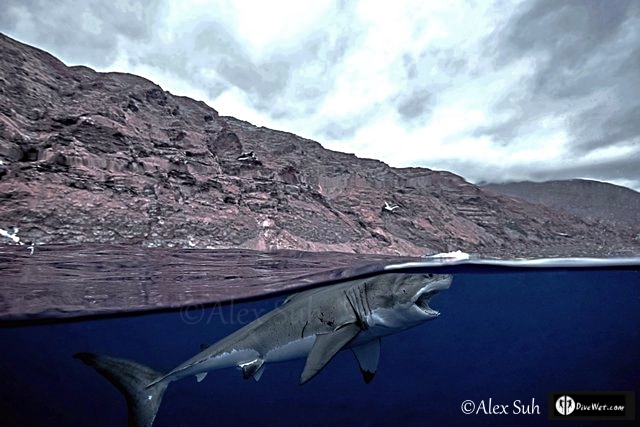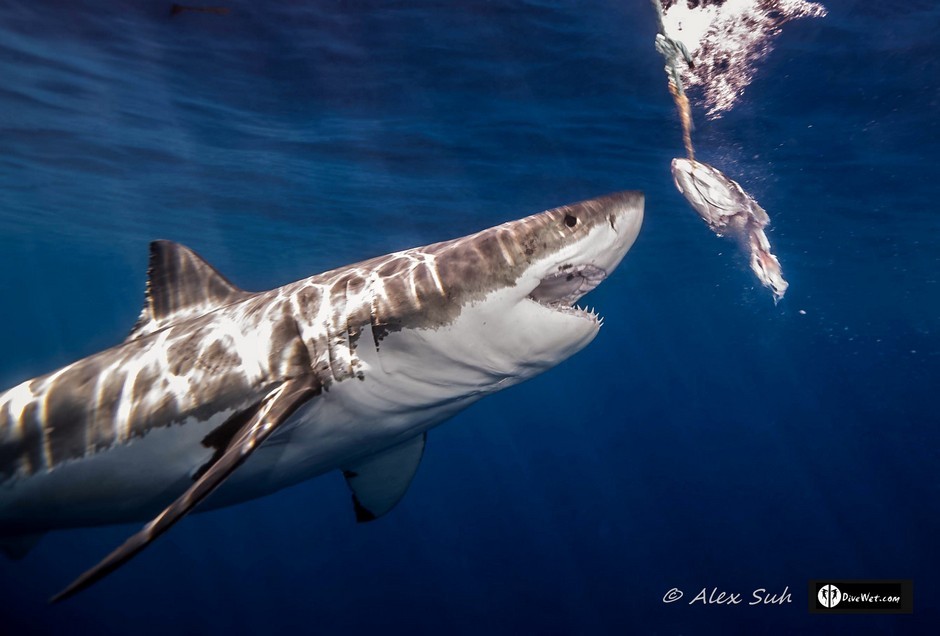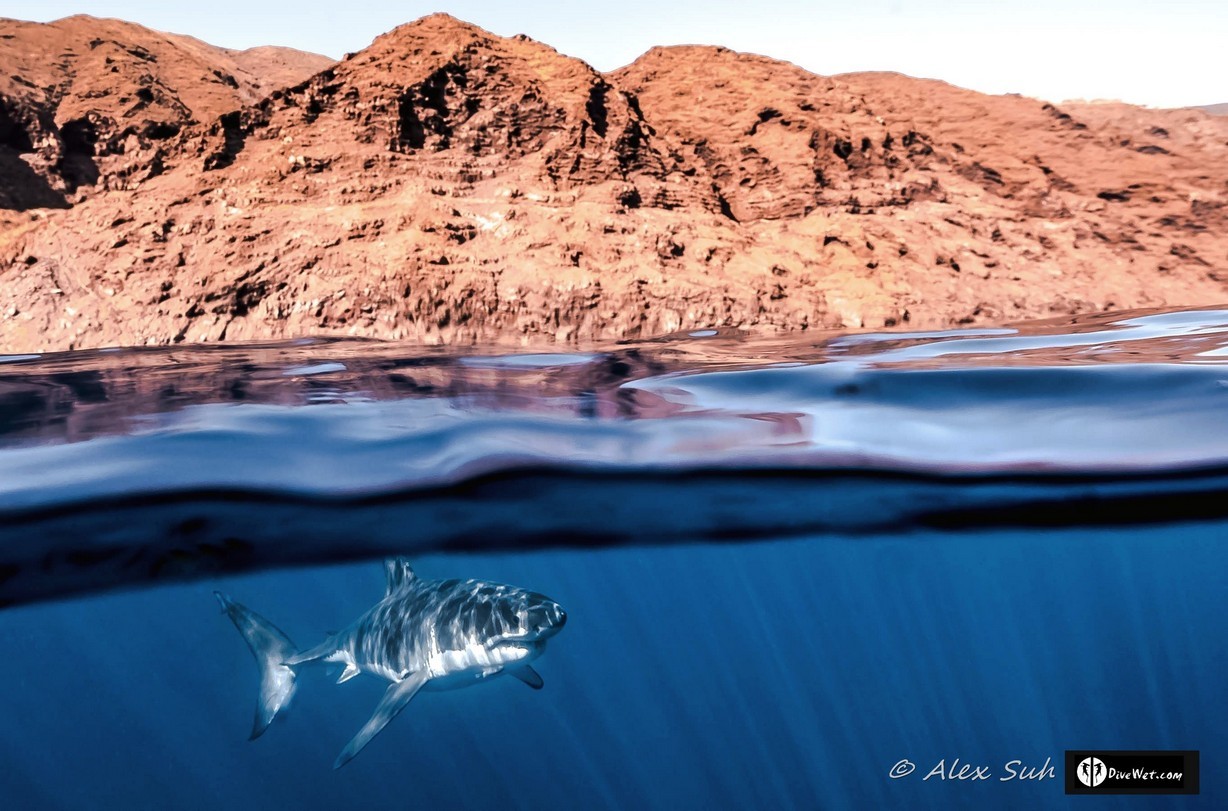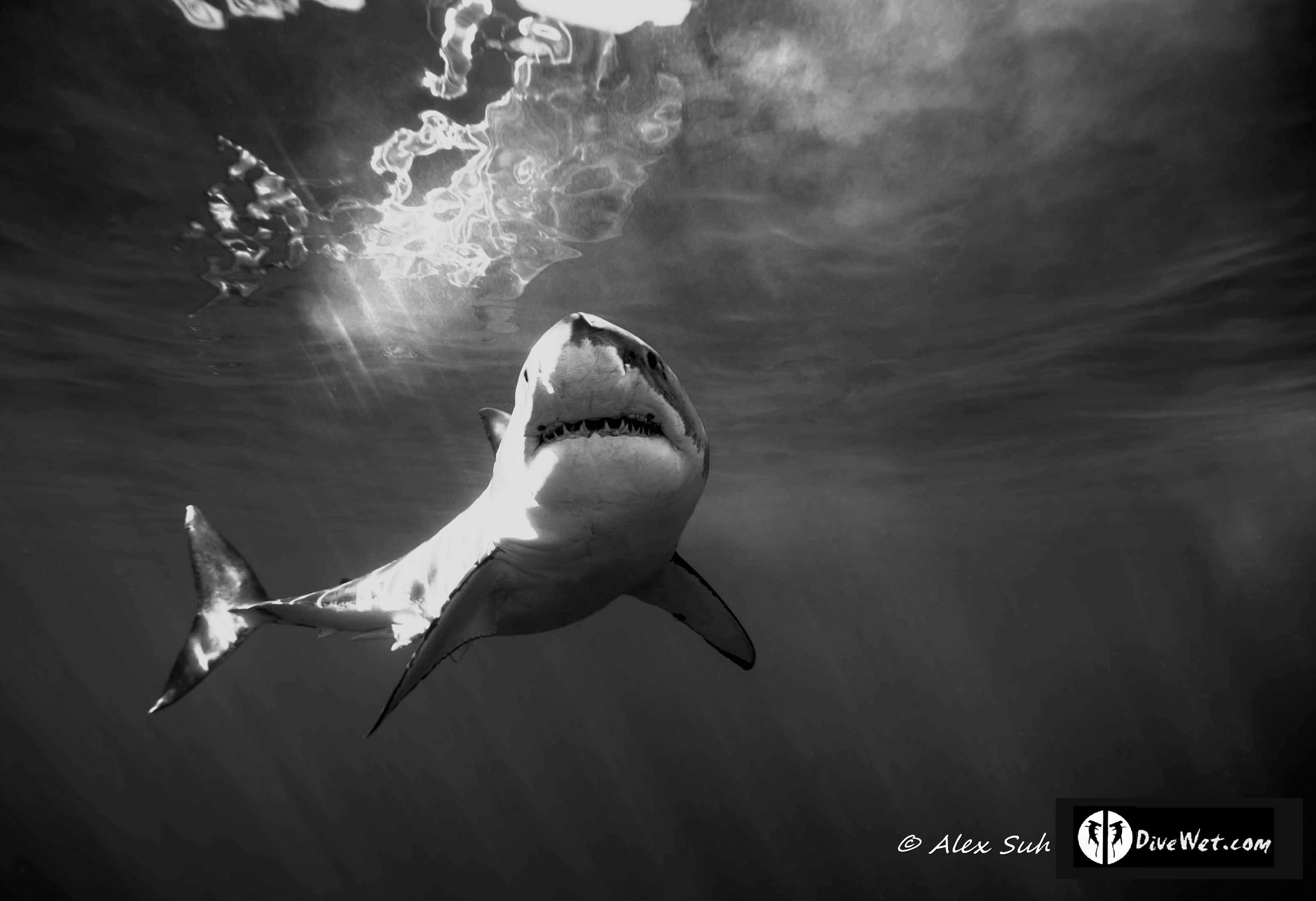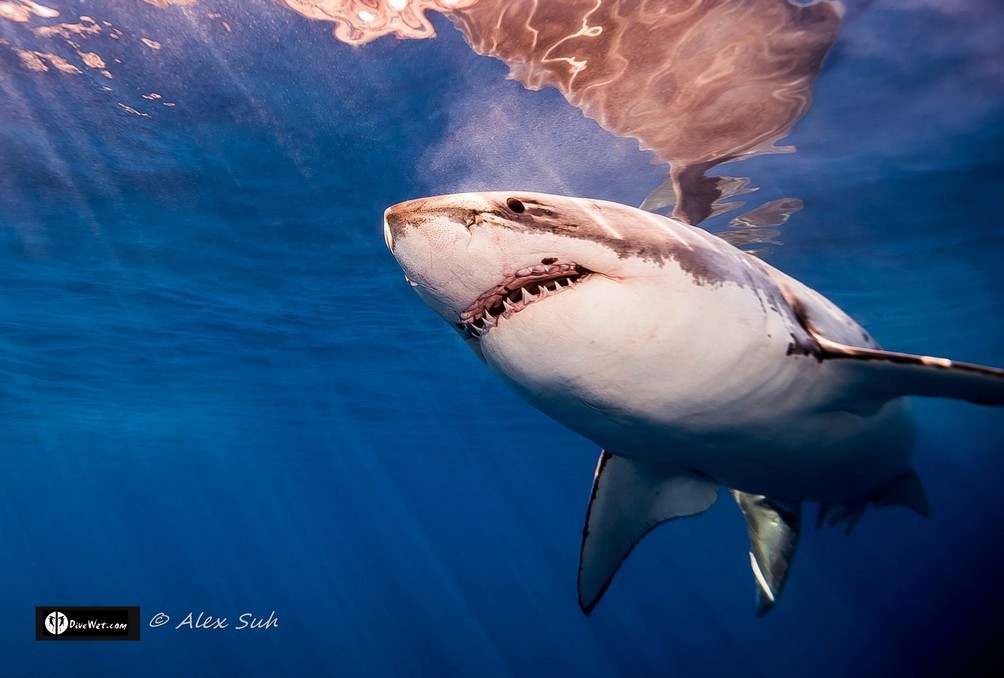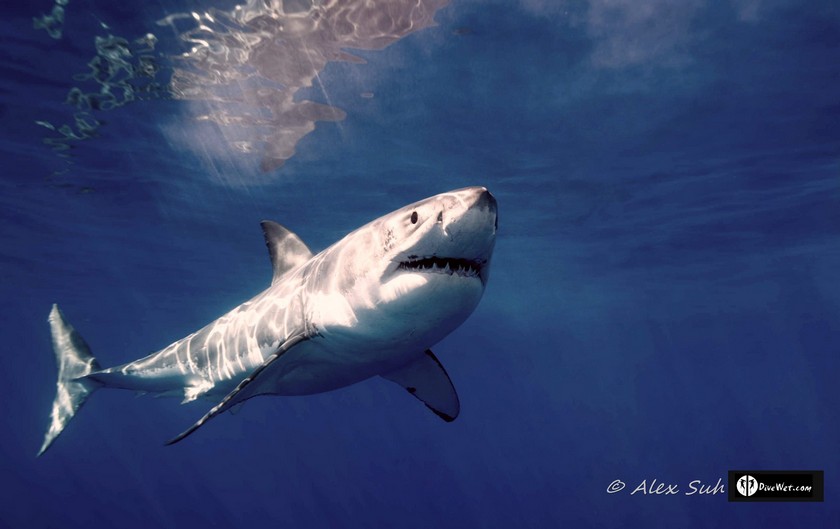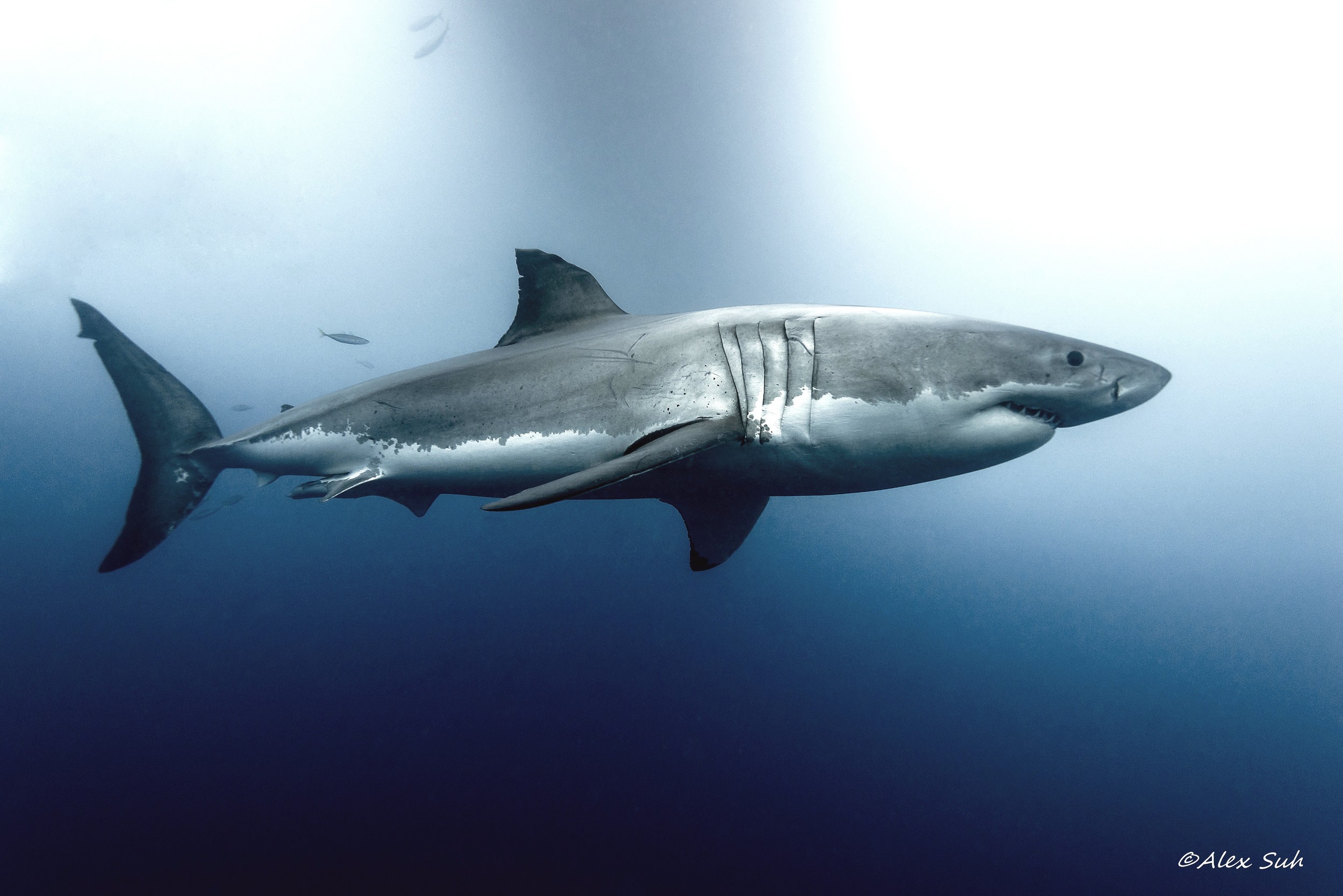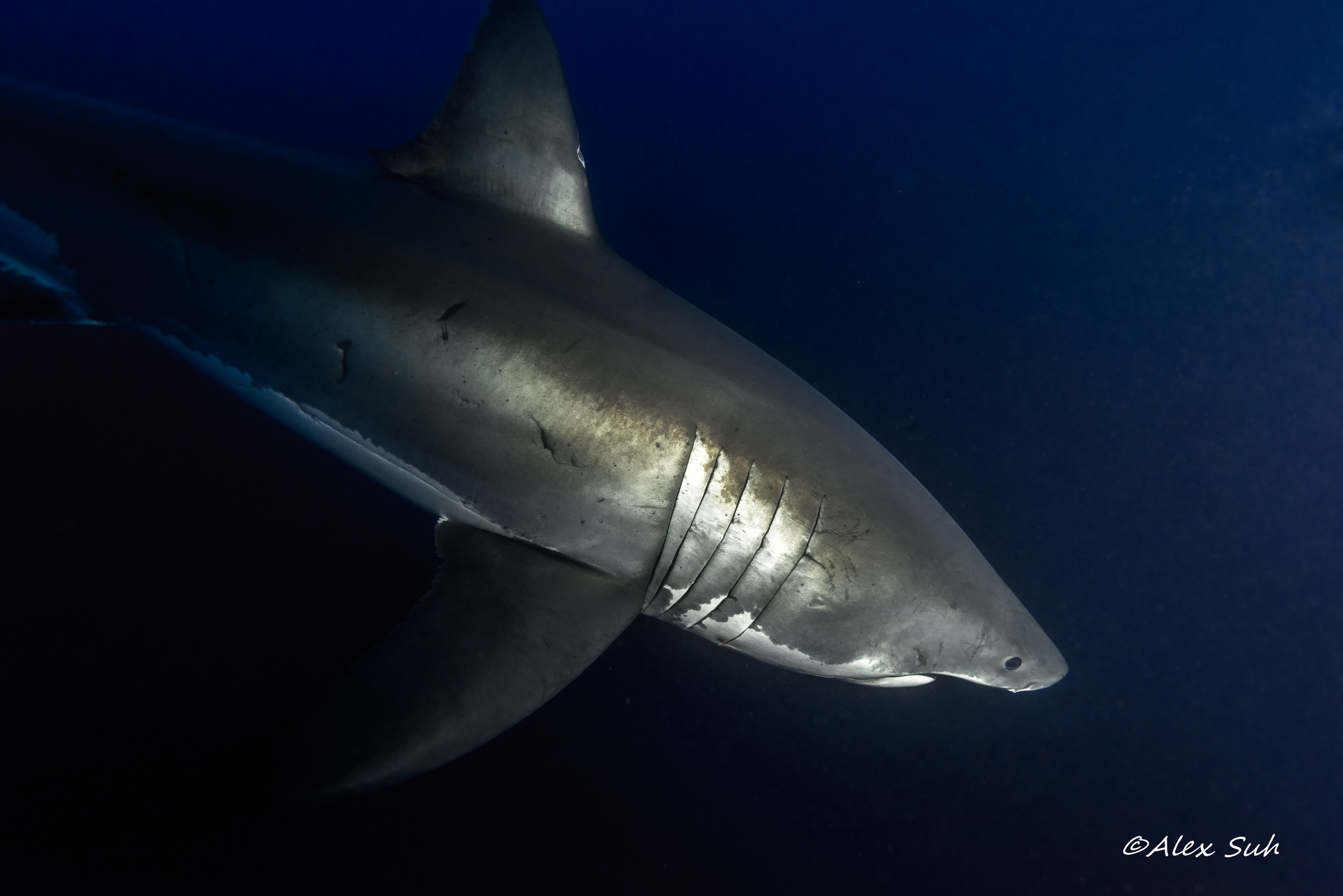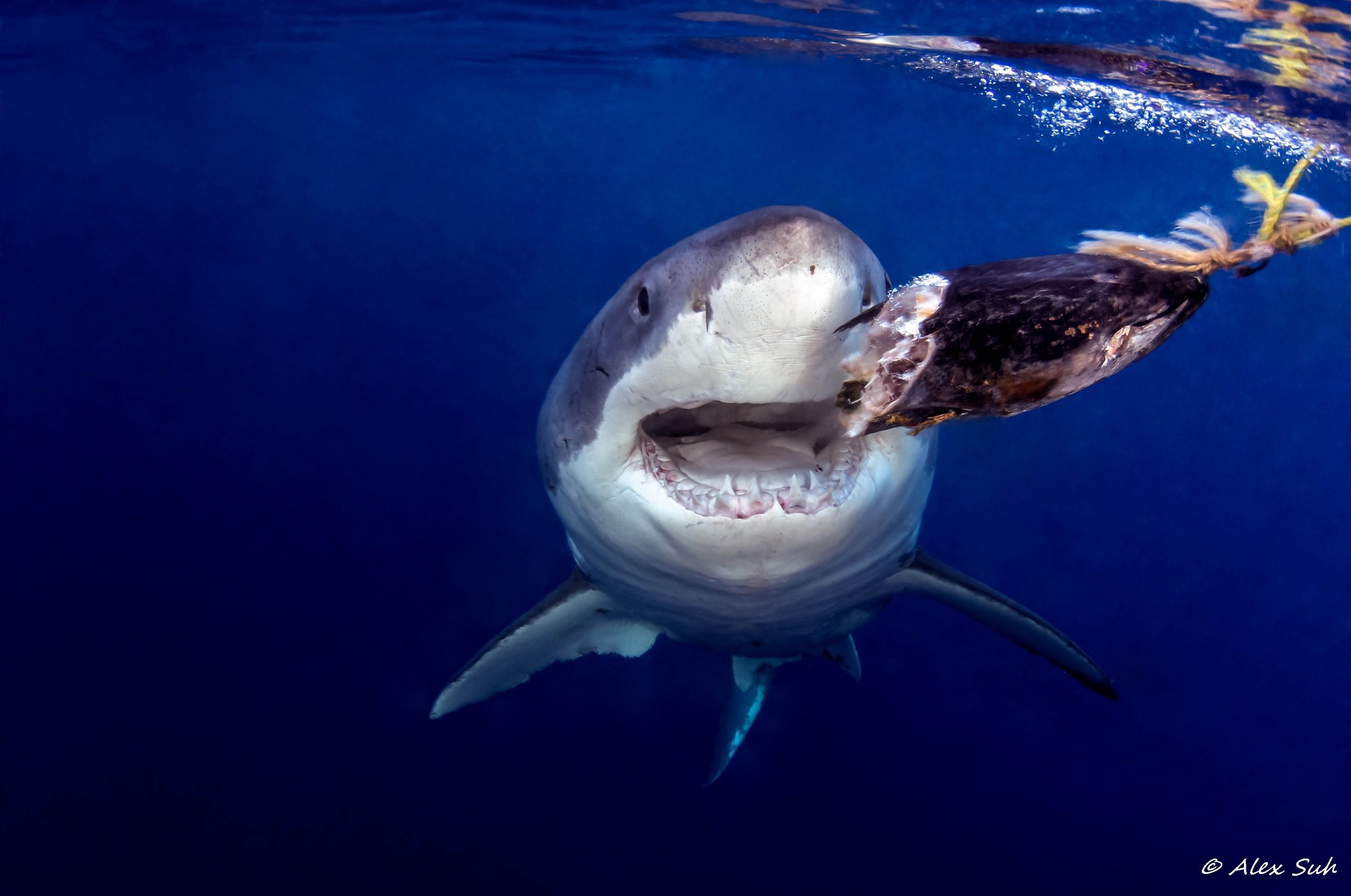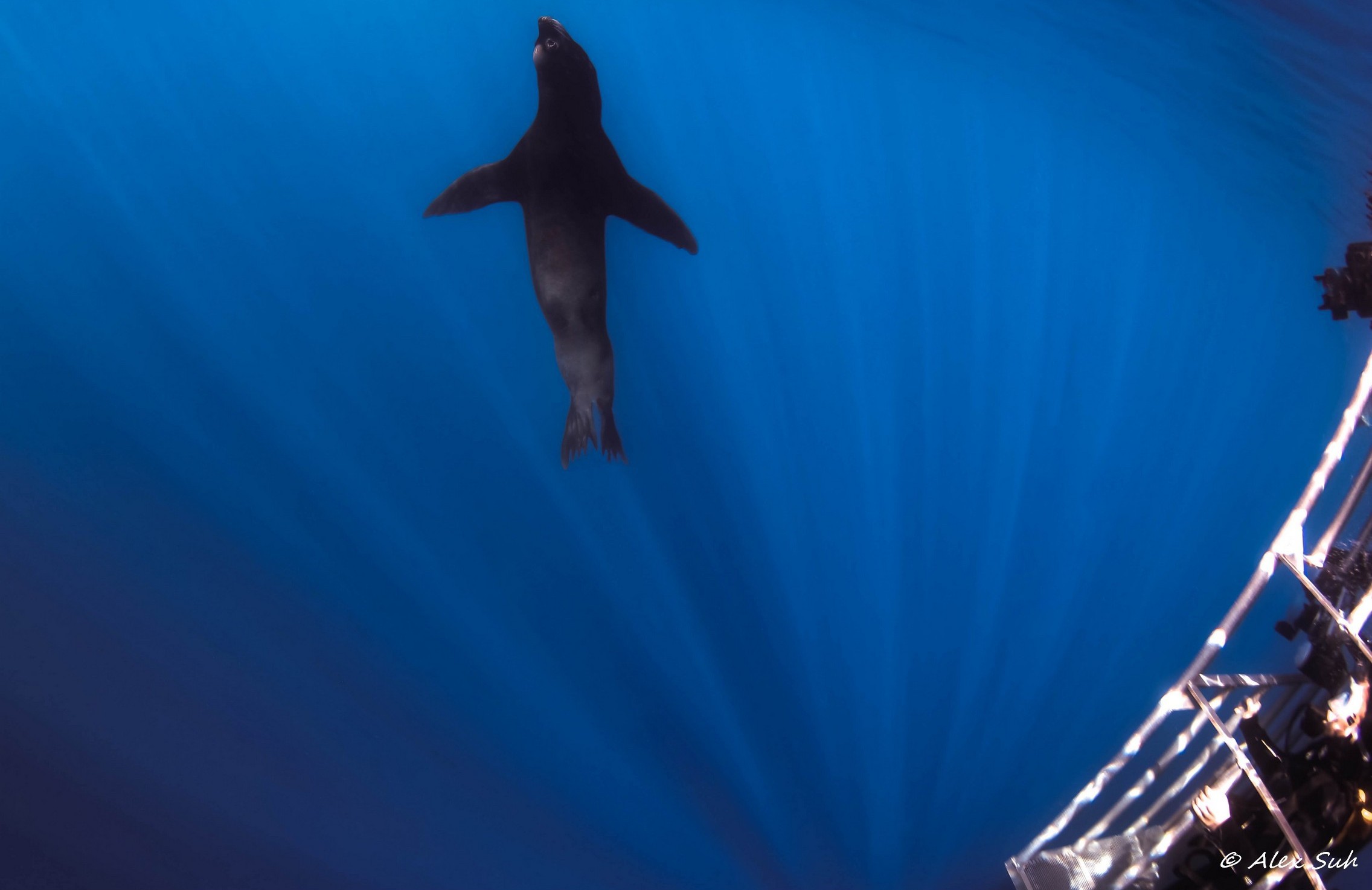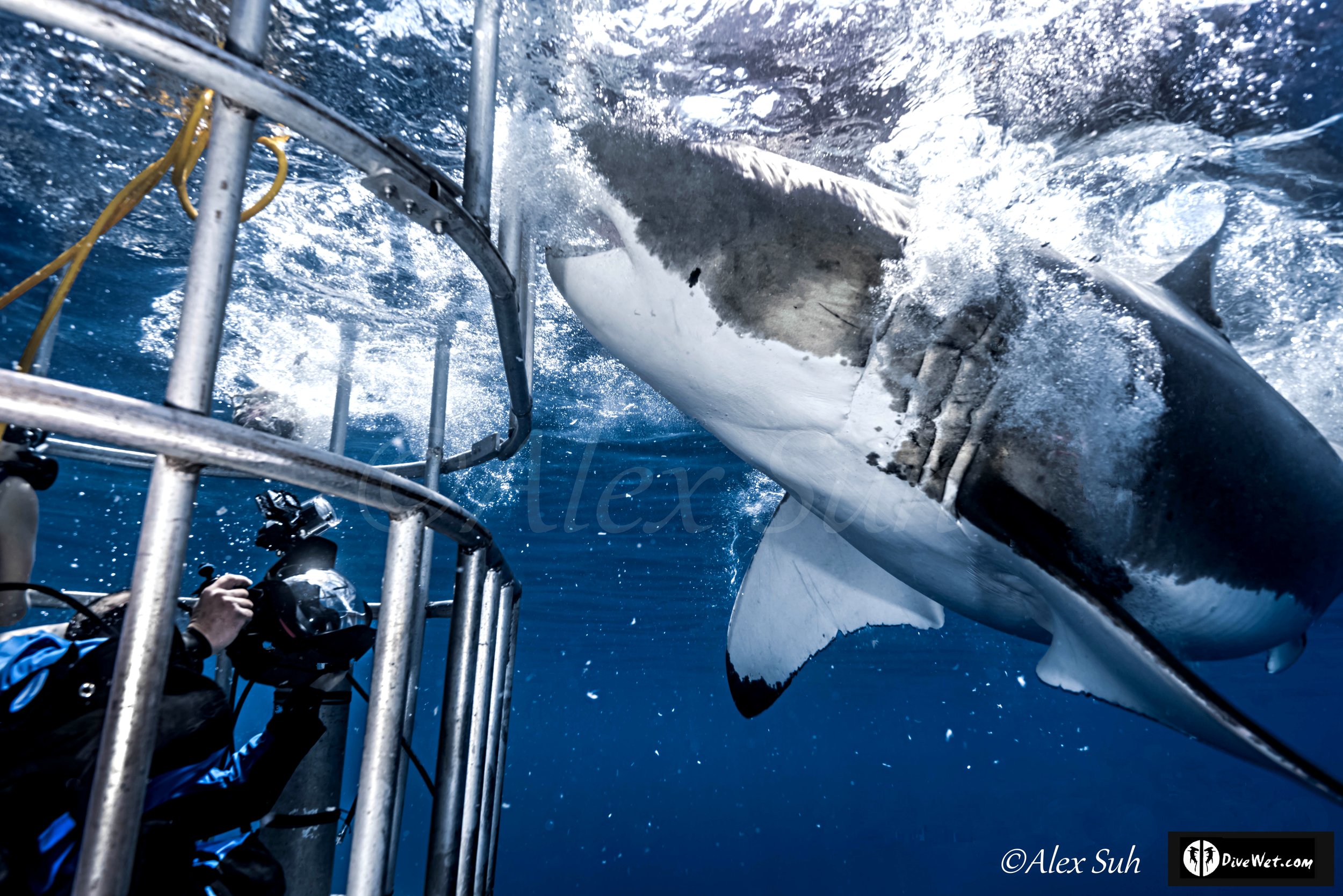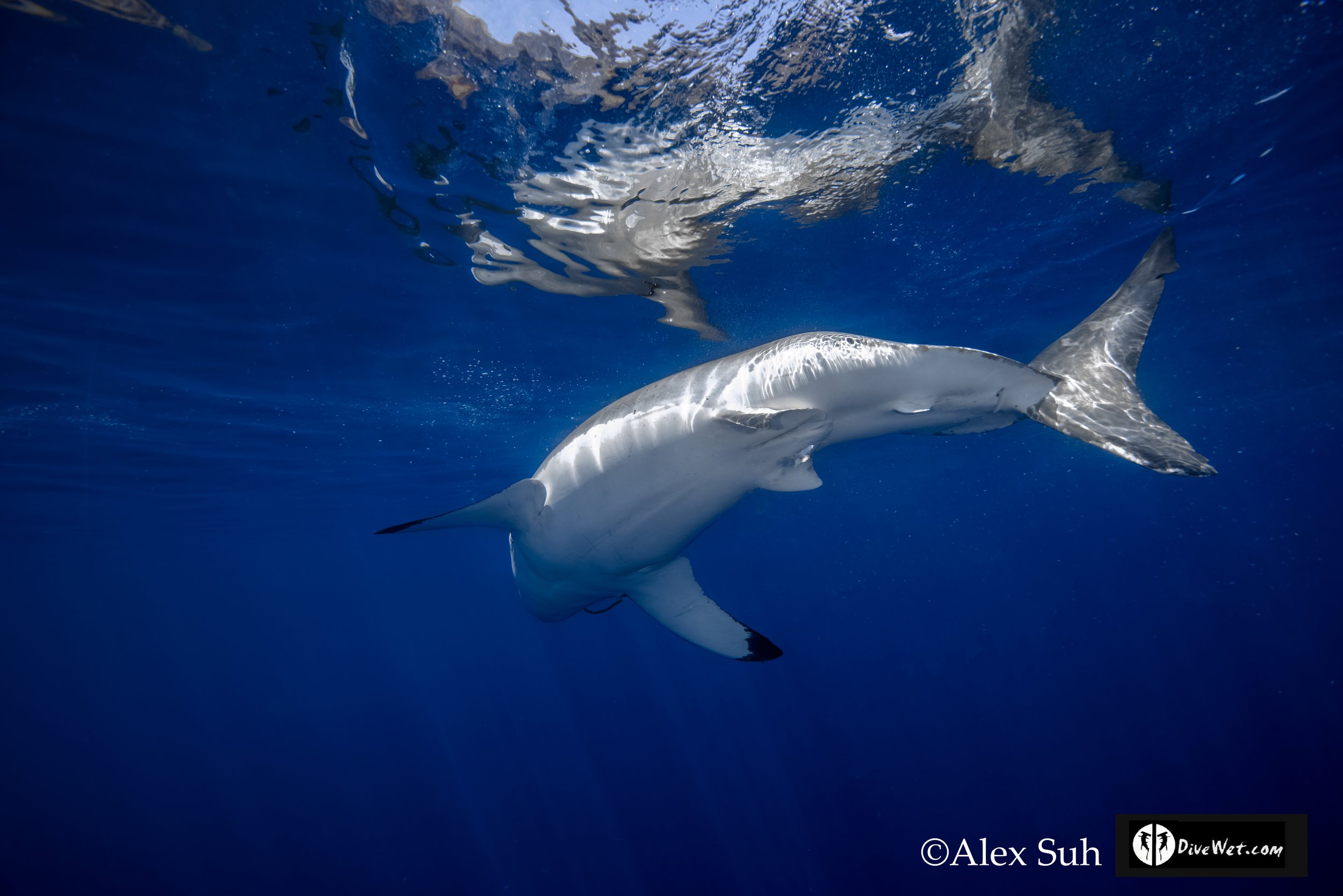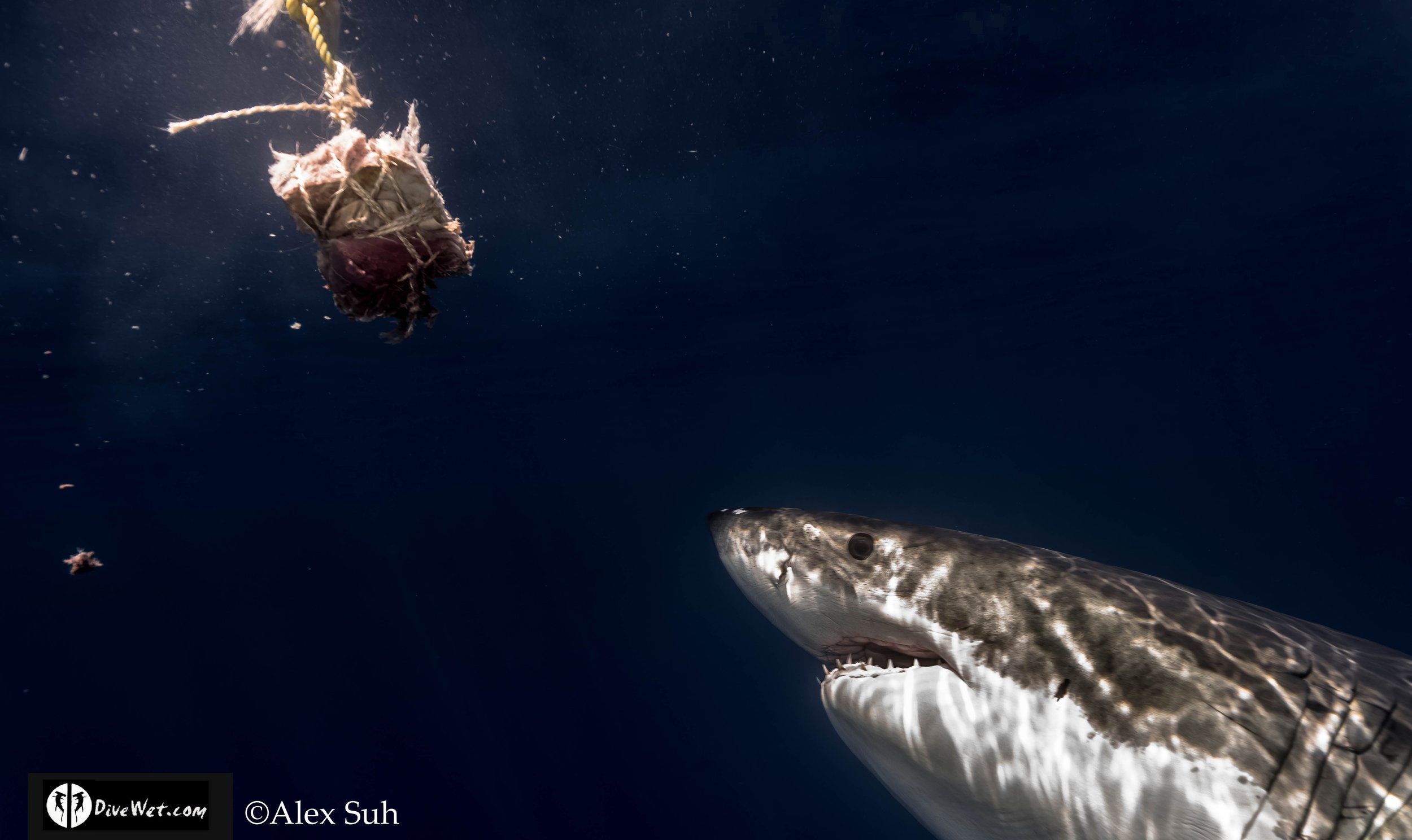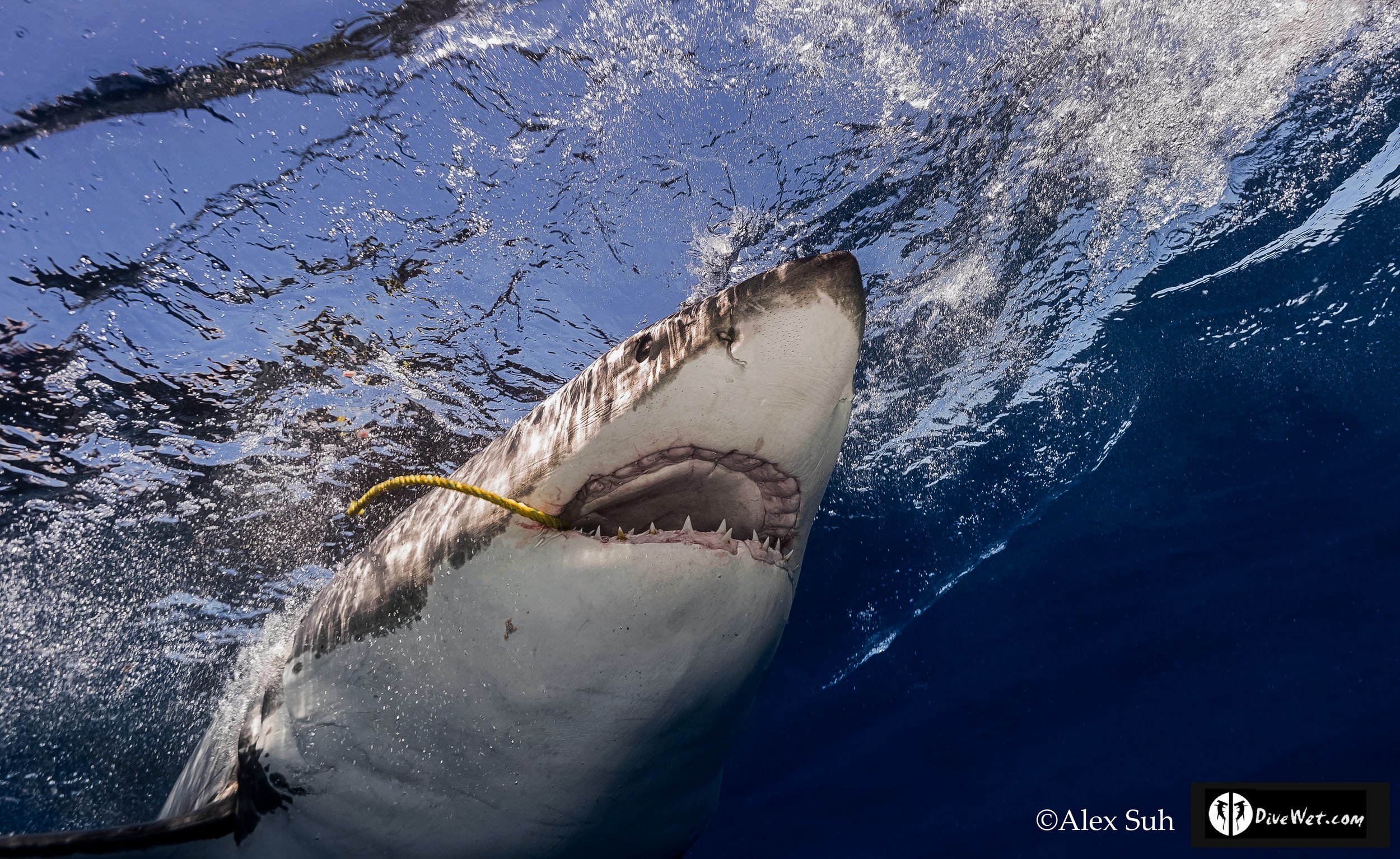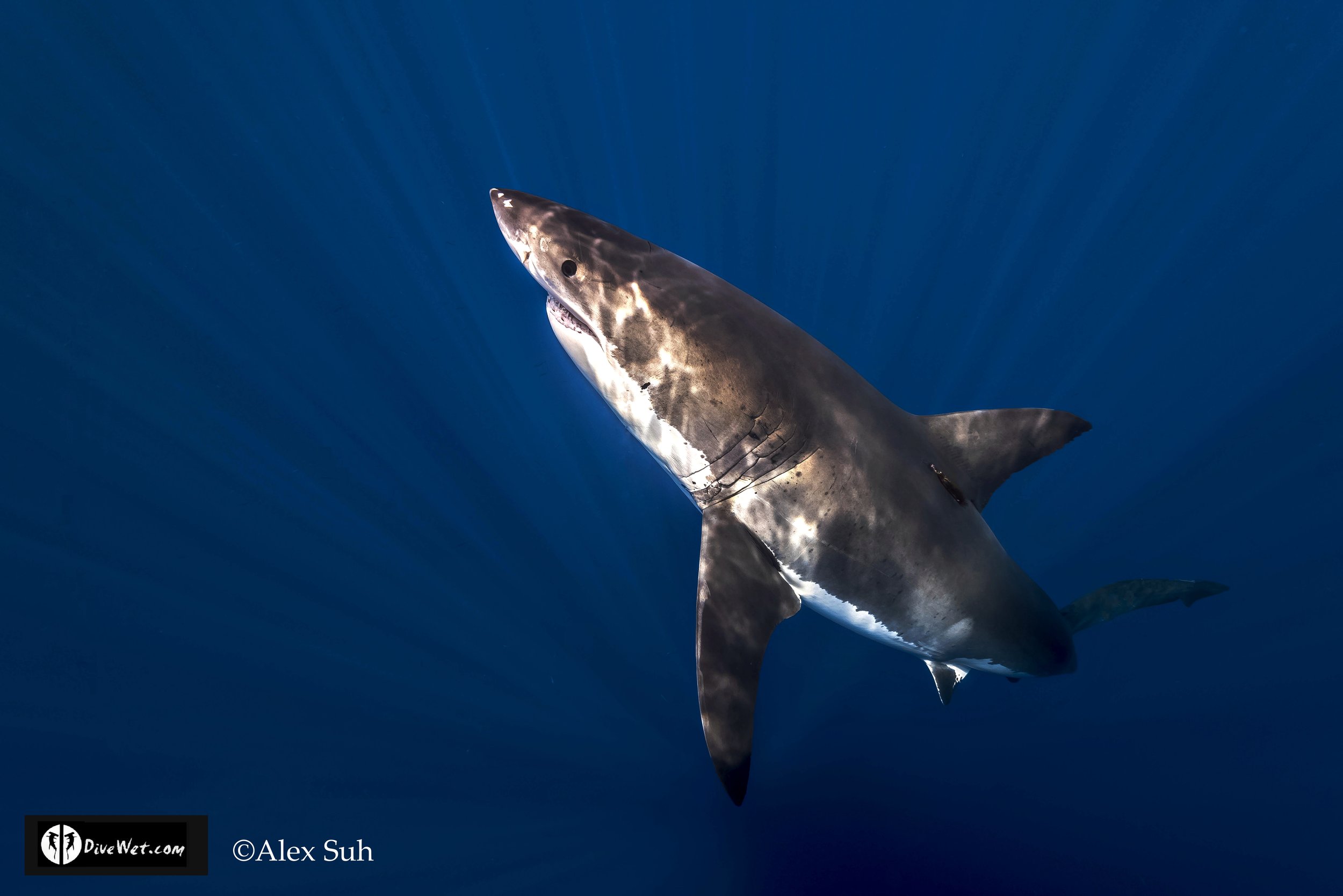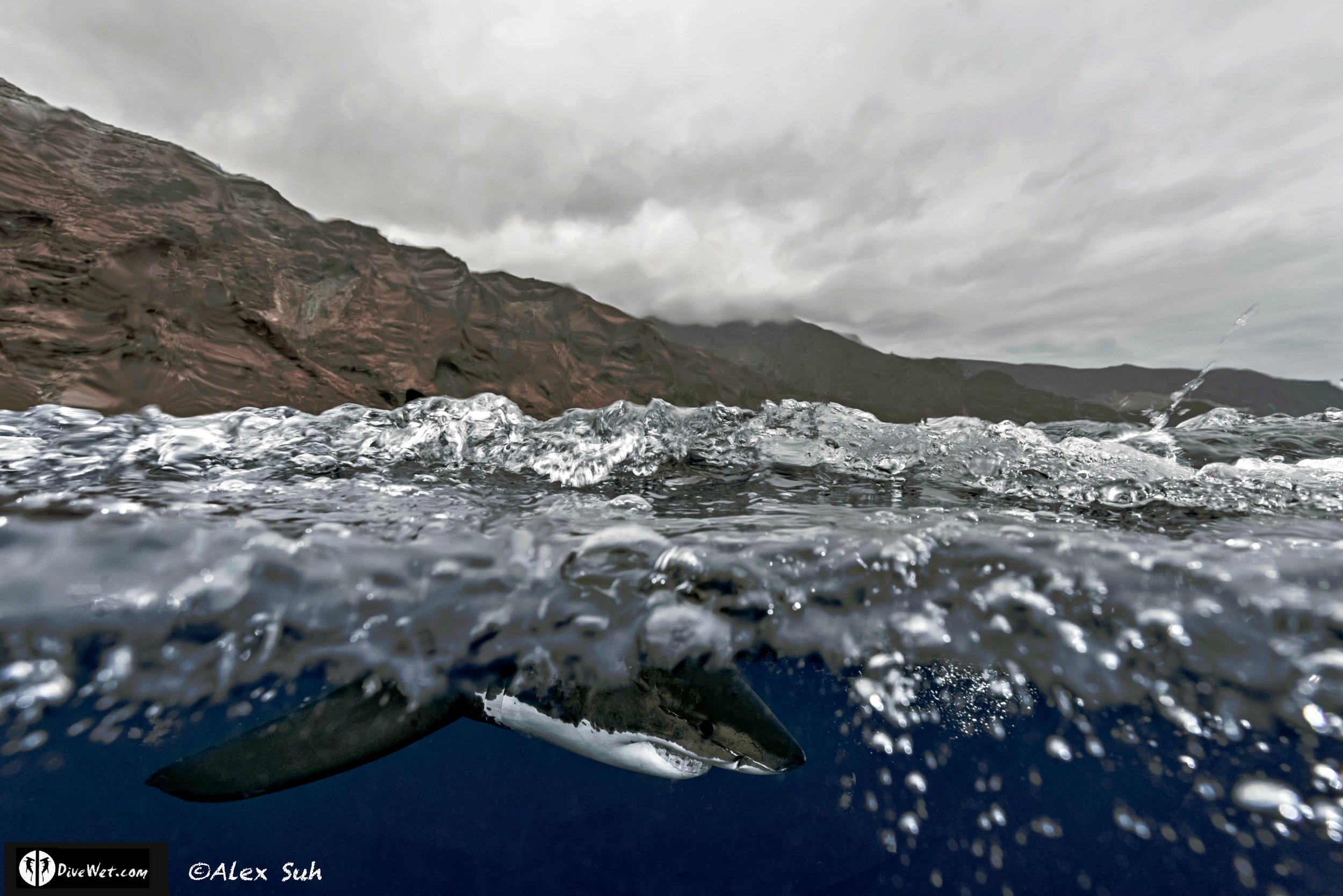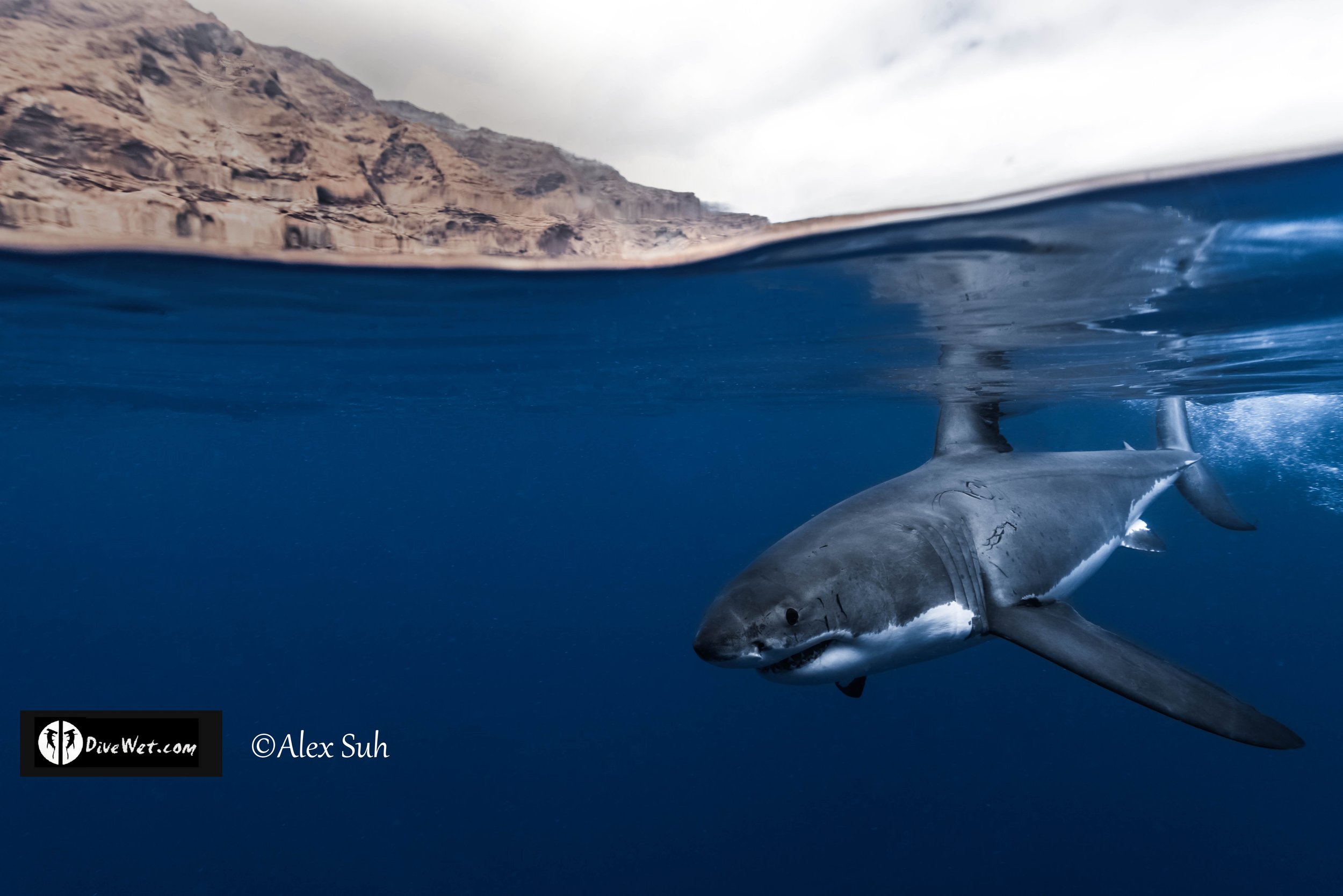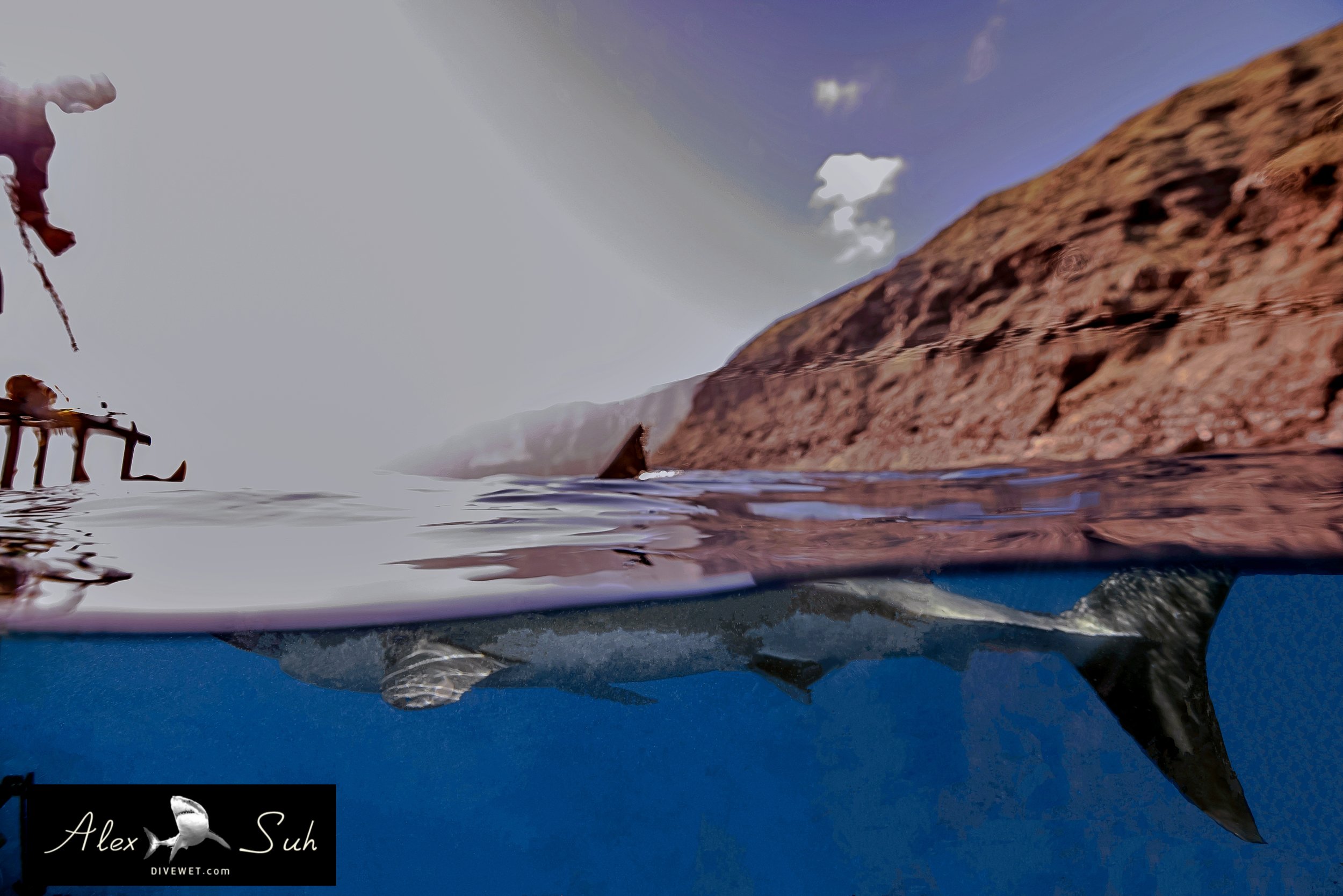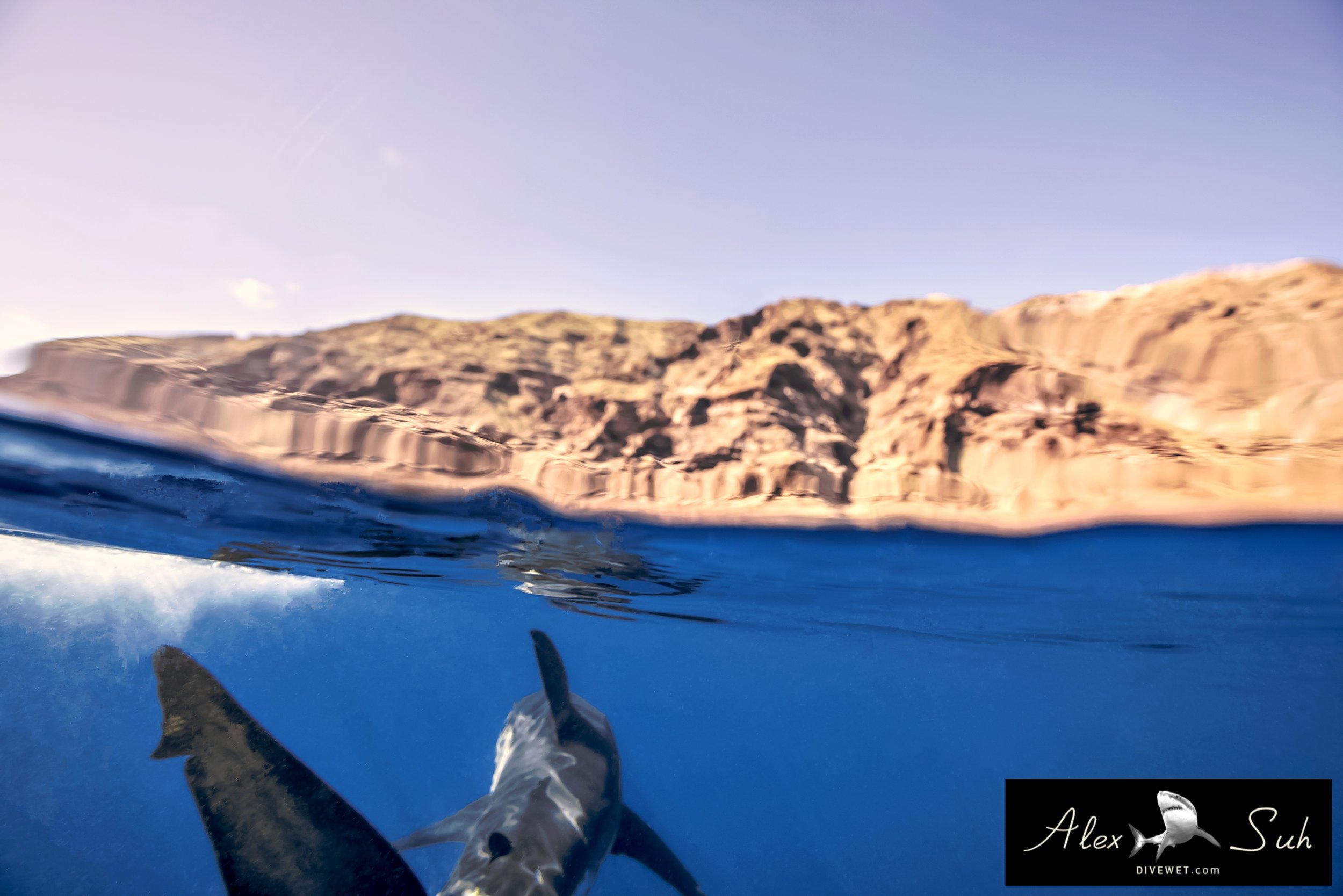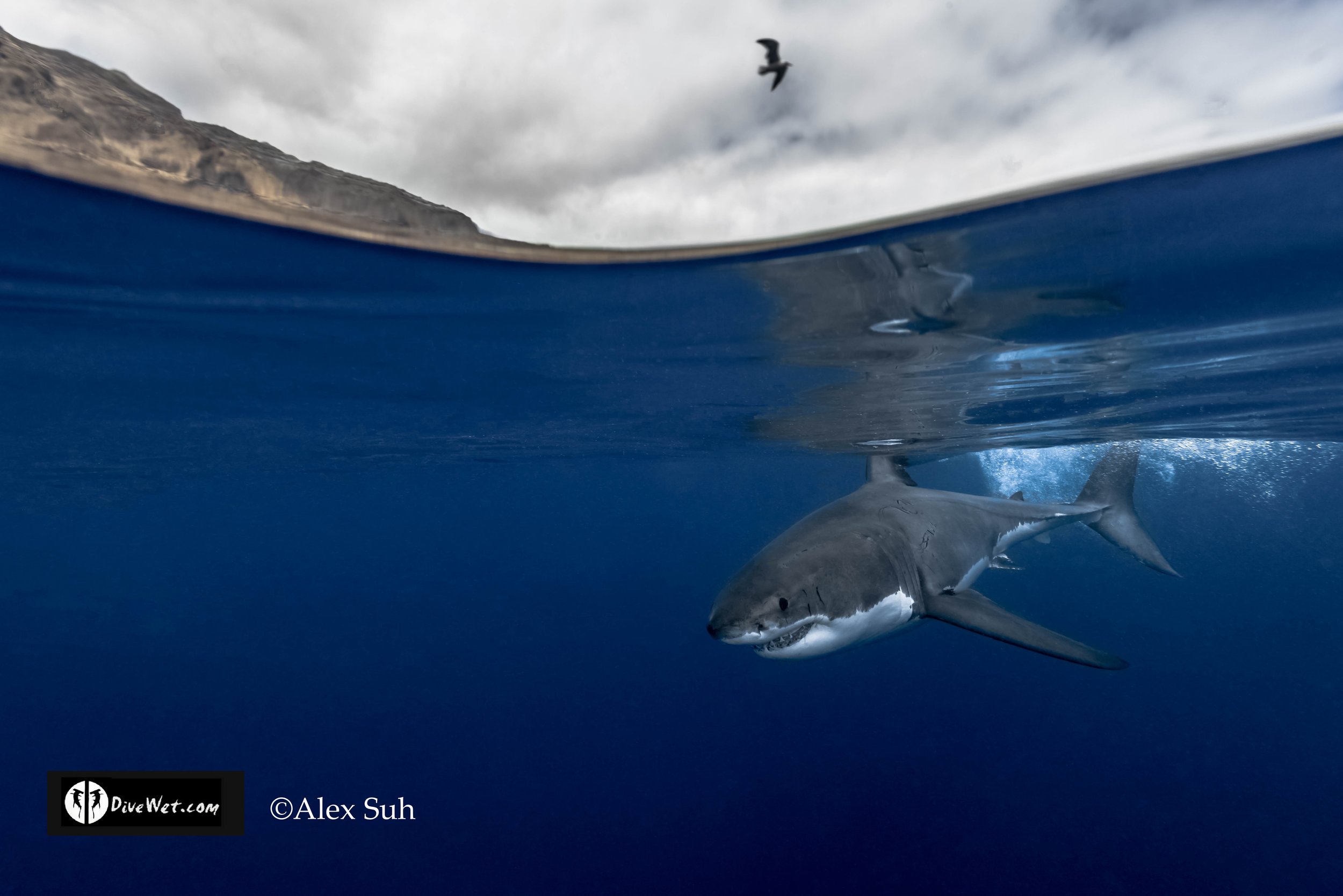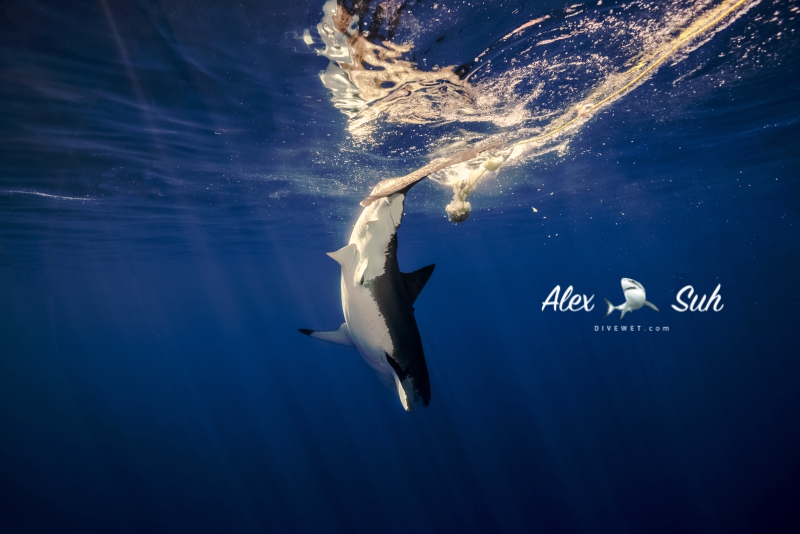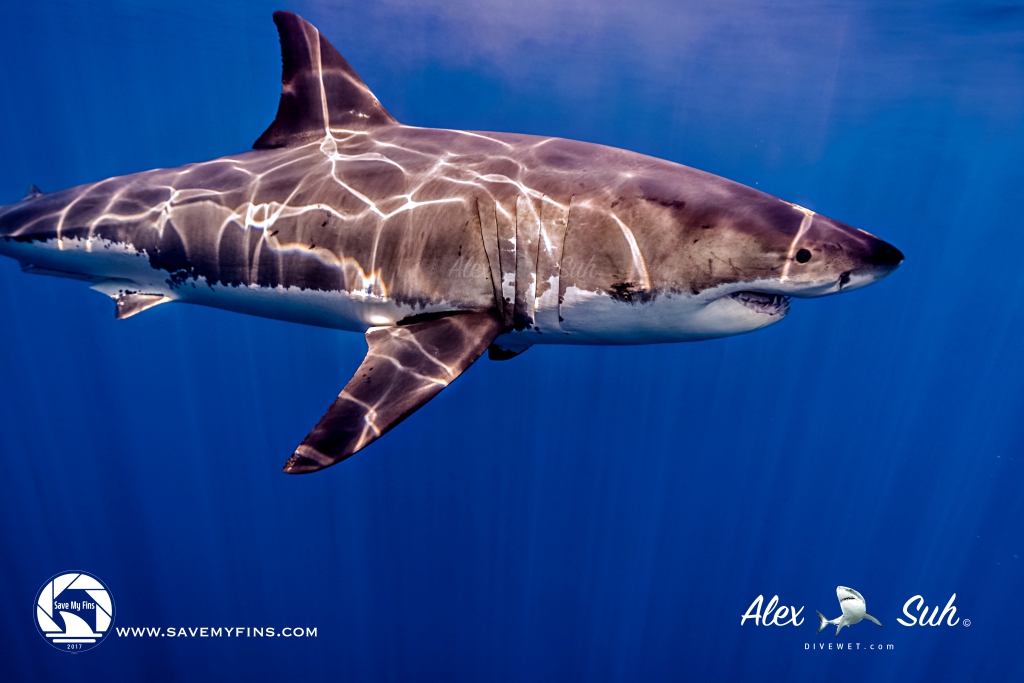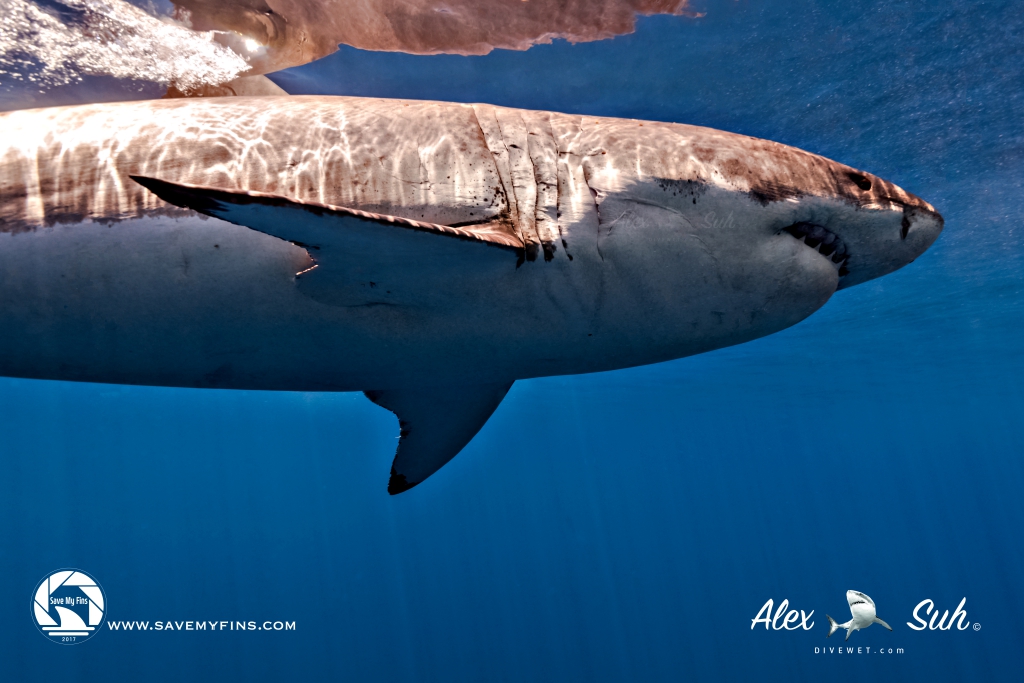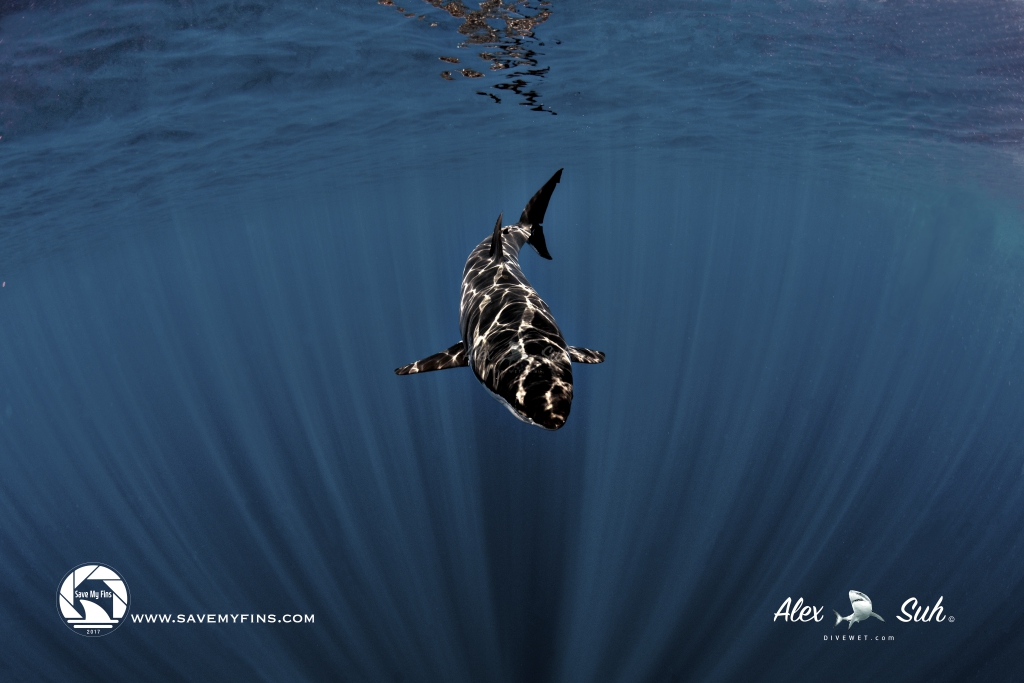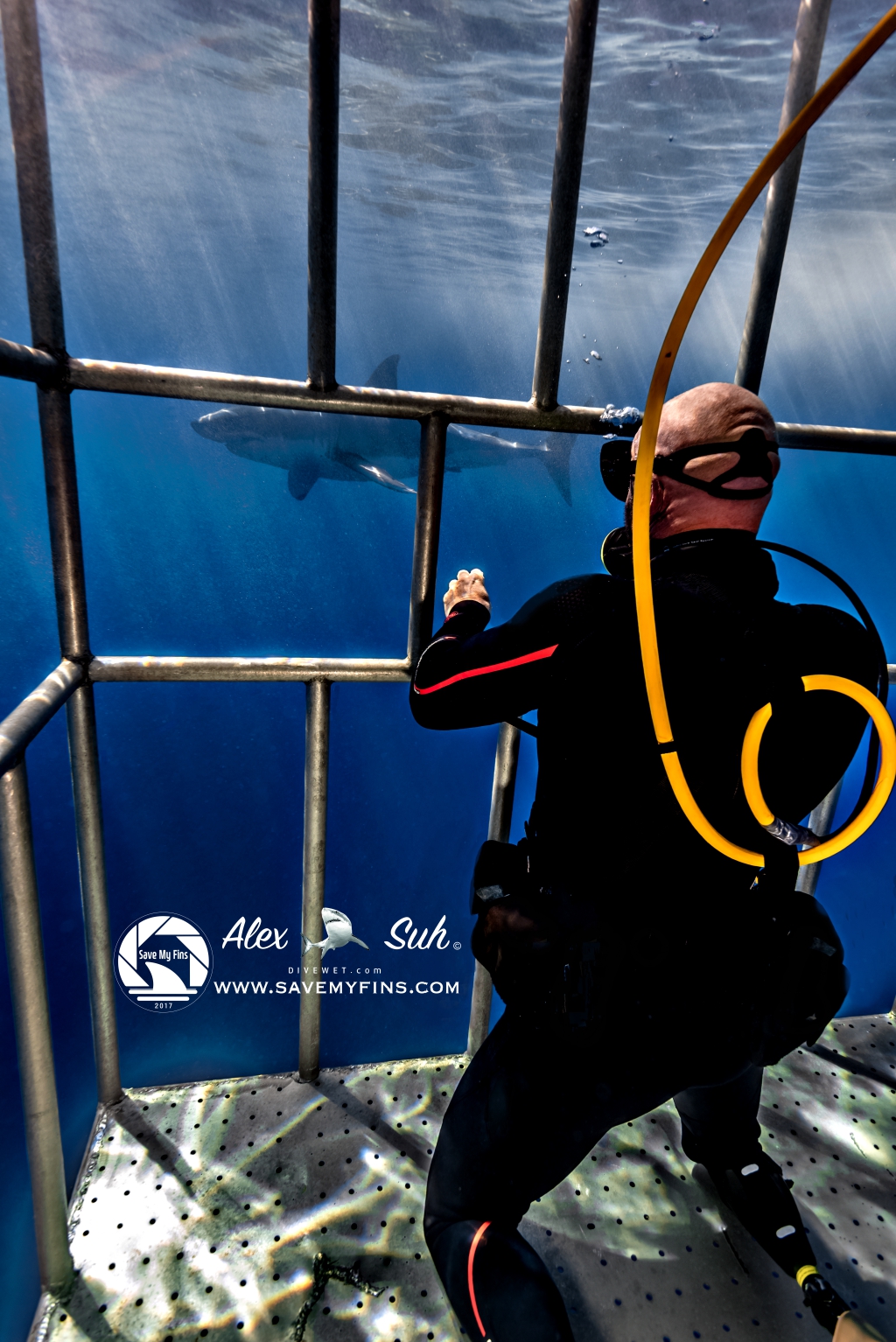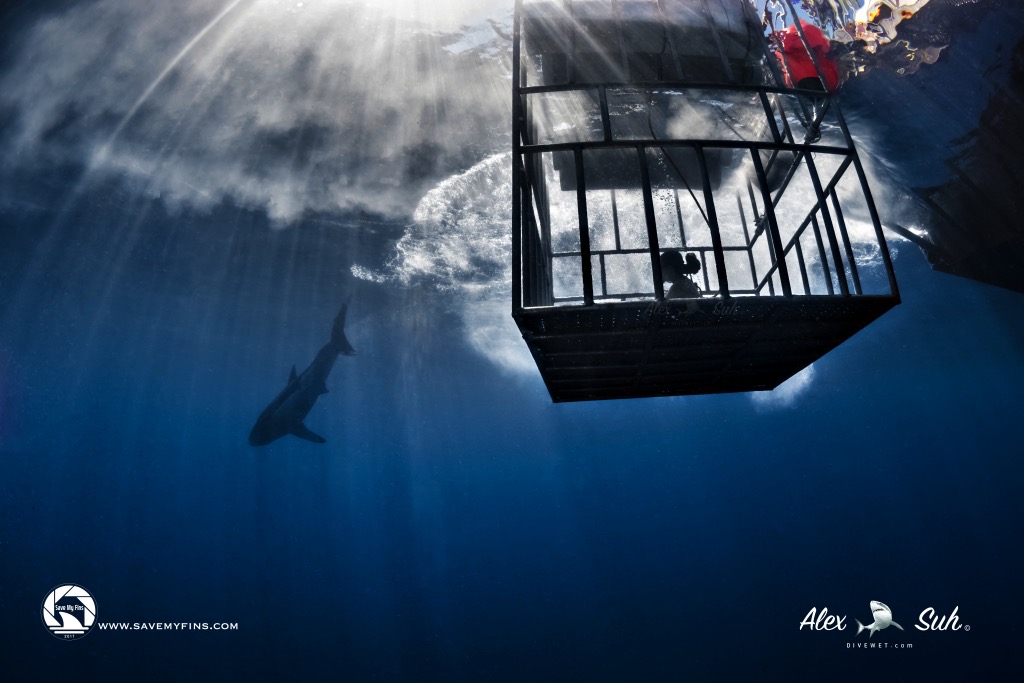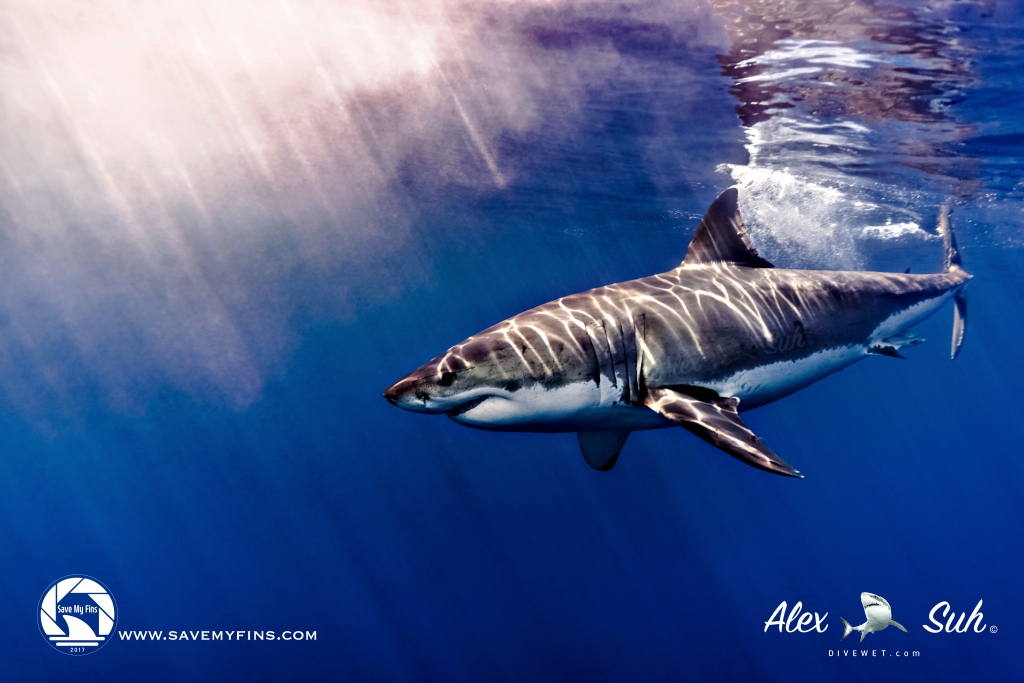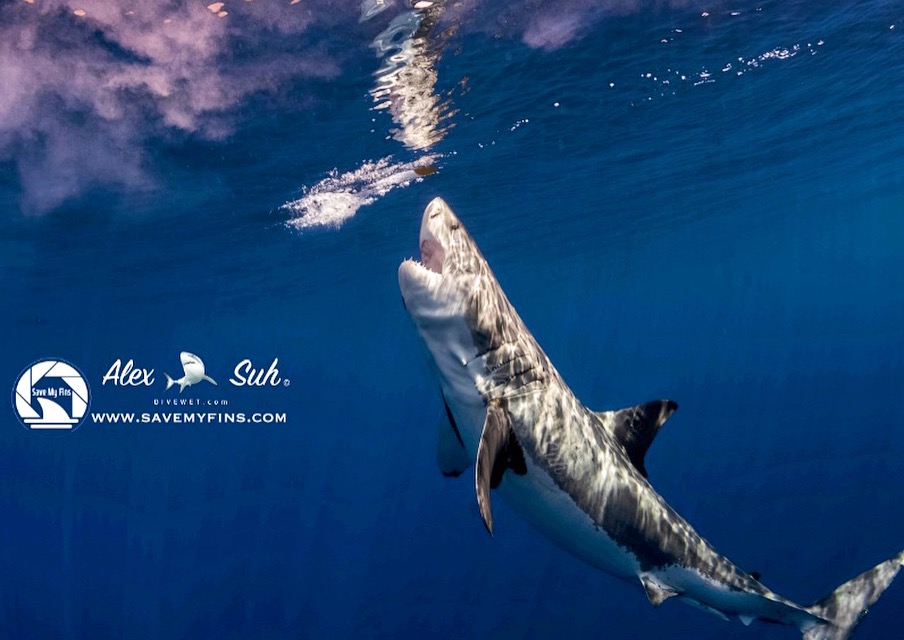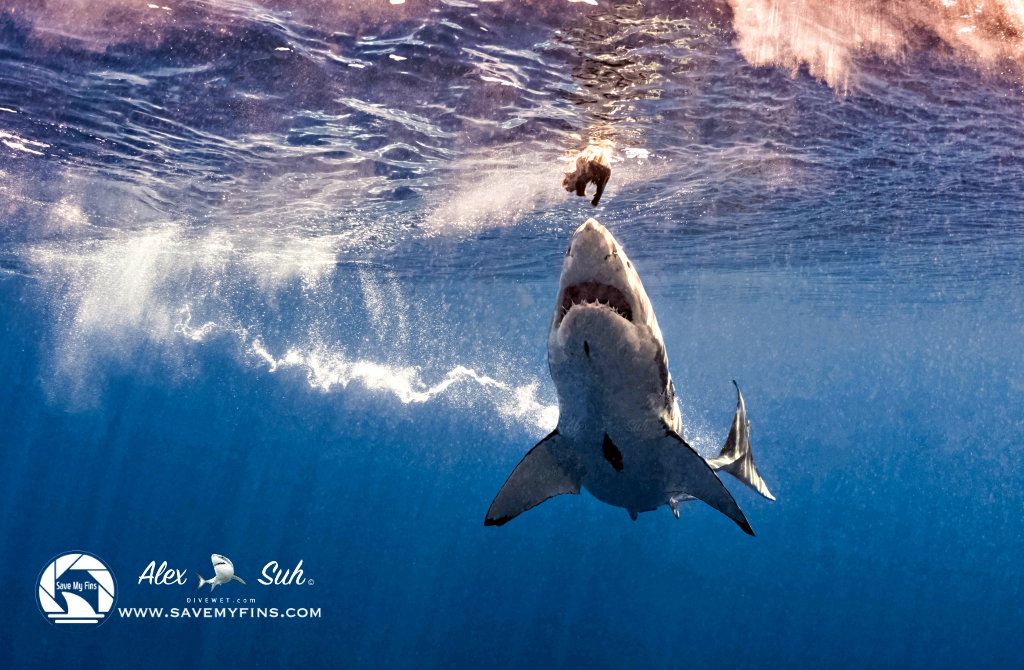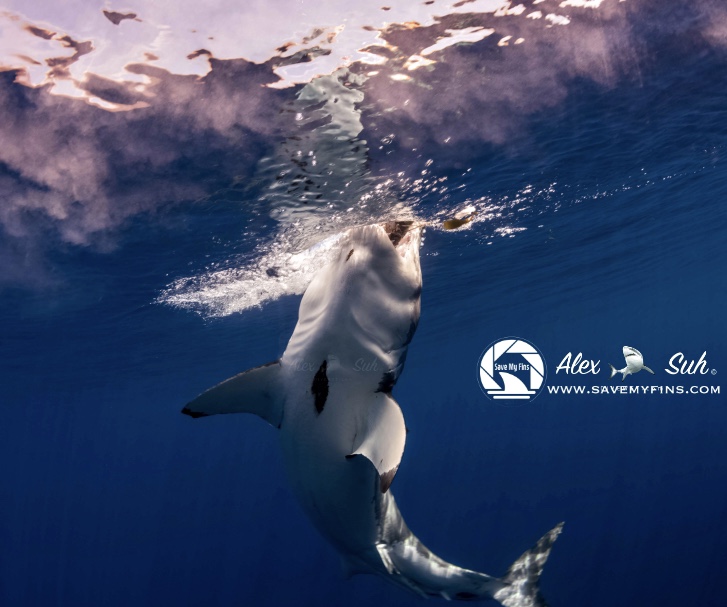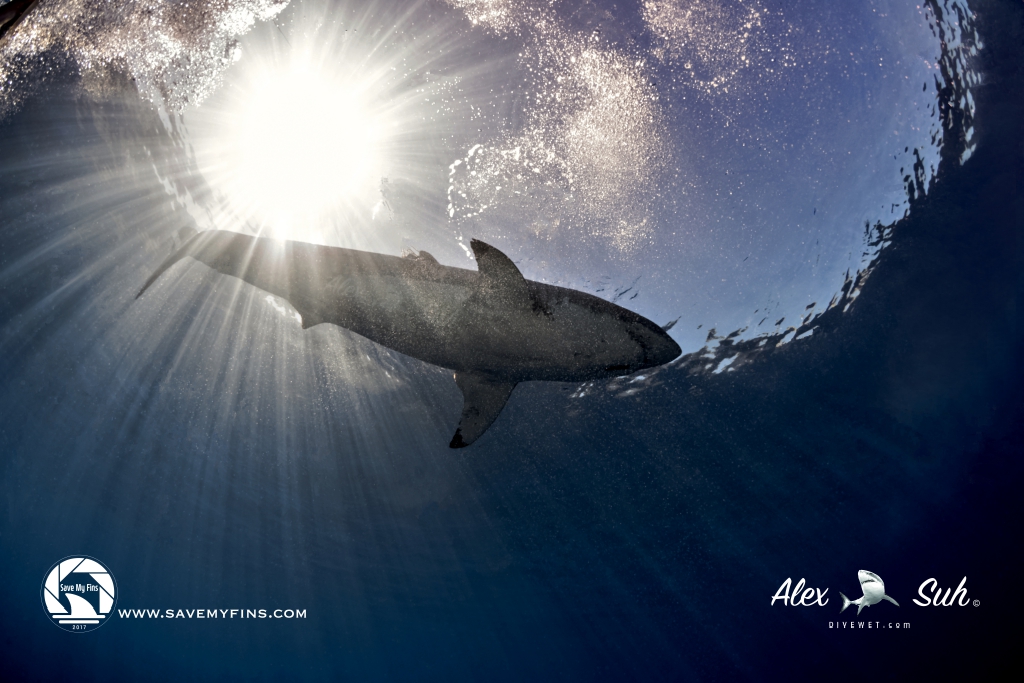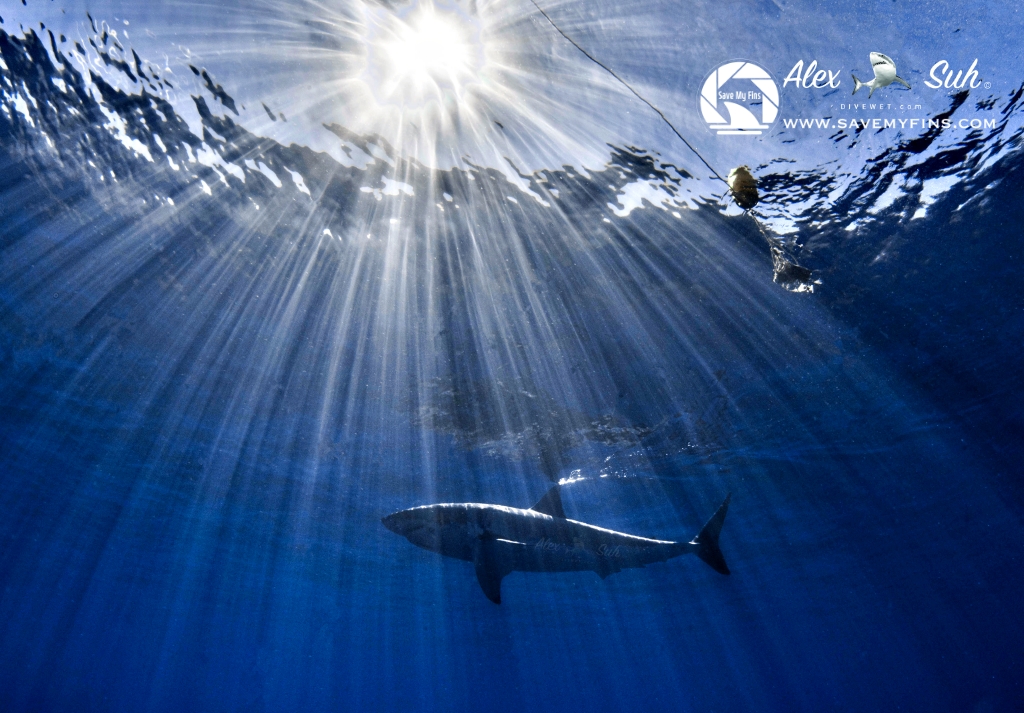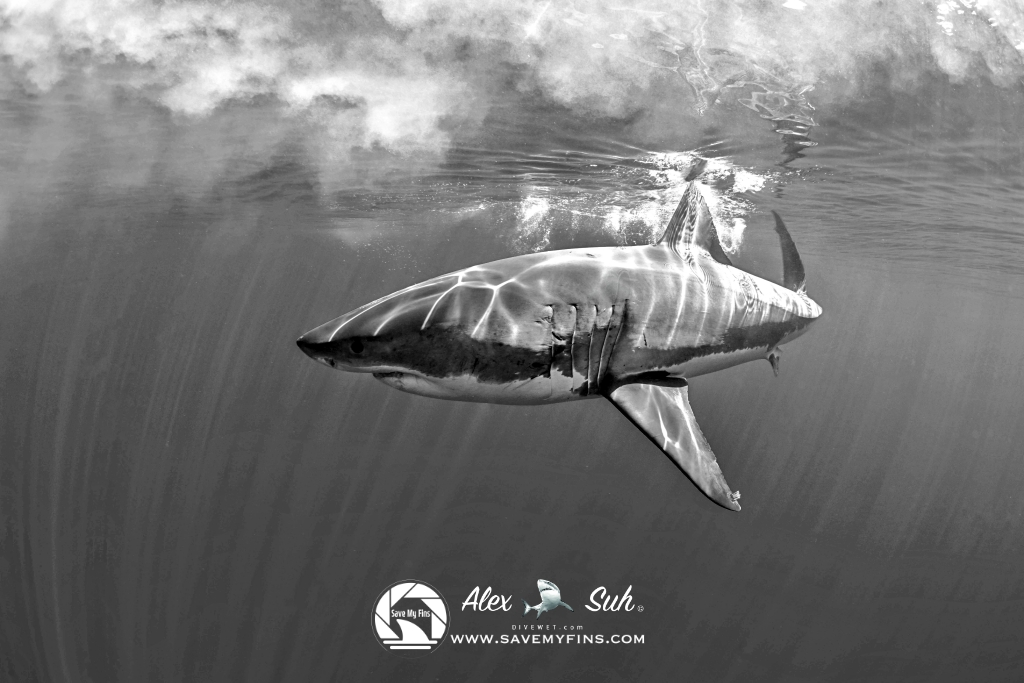Great White Shark Dive Expedition
(Click on photo to enlarge then highlight over photo for captions)
These photos were taken at Isla Guadalupe, Mexico in October 2013 on my first Great White Shark dive which was also an "Out of the Cage" experience. This was a rare opportunity to do this type of diving since there was a 3D documentary on sharks was being filmed by two independent Italian film makers that flew in from Italy and they were shooting the last segments of their documentary on sharks. They were very nice guys, Marco and Carlo. I was able to shoot on top of the shark cage and out of the shark cage (both unprotected) to get some crazy videos as well as these photos with my Canon rig using my Tokina 10-17 mm fisheye lens. I have to admit, I wish I had a better camera at this time, but next trip we will see if I can do better.
Great Whites are the largest predatory fish on Earth. However, don't be fooled by the movie "Jaws". Interestingly enough, this is when I started to learn how to dive when it was first released in theaters - great timing. Which I think also lead to my fascination with sharks. They are not the mean, man eating monsters that the movie portrays in the Hollywood movies. In fact, I found them to be very calm and intelligent. They were cautious and calculating before approaching the divers or the chum (tuna parts) that was on the surface line or attached to the shark cage was in the water. We even observed them swimming with a seal and not attacking it when it was at equal level. Researchers have found that when Great Whites bite humans, it is more of a test to see if they are food or to play and most of the time they release them, unfortunately they are very strong and a bite can cause damage which is why they have a bad reputation in general enhanced by the movies.
They grow to an average of 15 feet (4.6 meters) in length, though specimens exceeding 20 feet (6 meters) and weighing up to 5,000 pounds (2,268 kilograms) have been recorded.
They have slate-gray upper bodies to blend in with the rocky coastal sea floor, but get their name from their universally white underbellies. They are streamlined, torpedo-shaped swimmers with powerful tails that can propel them through the water at speeds of up to 15 miles (24 kilometers) per hour. They can even leave the water completely, breaching like whales when attacking prey from underneath.
Highly adapted predators, their mouths are lined with up to 300 serrated, triangular teeth arranged in several rows, and they have an exceptional sense of smell to detect prey. They even have organs that can sense the tiny electromagnetic fields generated by animals. Their main prey items include sea lions, seals, small toothed whales, and even sea turtles, and carrion.
Found in cool, coastal waters throughout the world, there is no reliable data on the great white's population. However, scientists agree that their number are decreasing precipitously due to over-fishing and accidental catching in gill nets, among other factors, and they are listed as an endangered species.
Fast Facts
Type: Fish
Diet: Carnivore
Size: 15 ft (4.6 m) to more than 20 ft (6 m)
Weight: 5,000 lbs (2,268 kg) or more
Group name: School or shoal
Protection status: Endangered
Did you know?
Great whites can detect one drop of blood in 25 gal (100 L) of water and can sense even tiny amounts of blood in the water up to 3 mi (5 km) away. Source: National Geographic
All the photos in this gallery were taken by Alex Suh except the ones where he is seen on top of the shark cage to show how he took some of the photos and of course the cupcake which was for fun.

